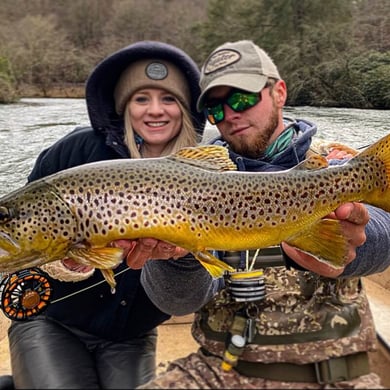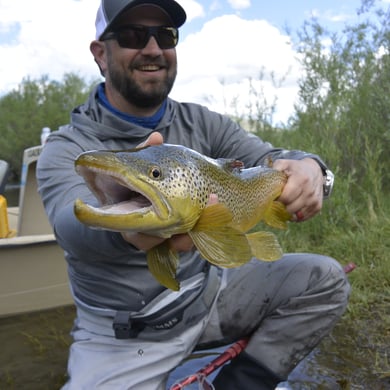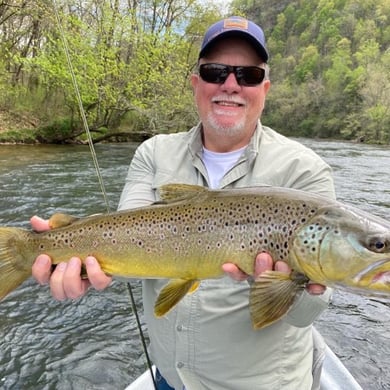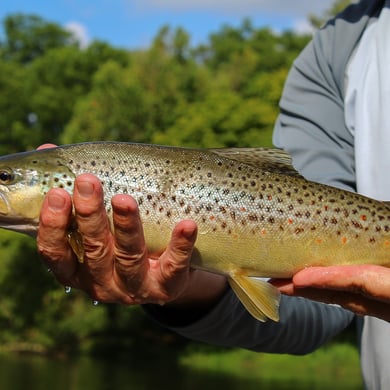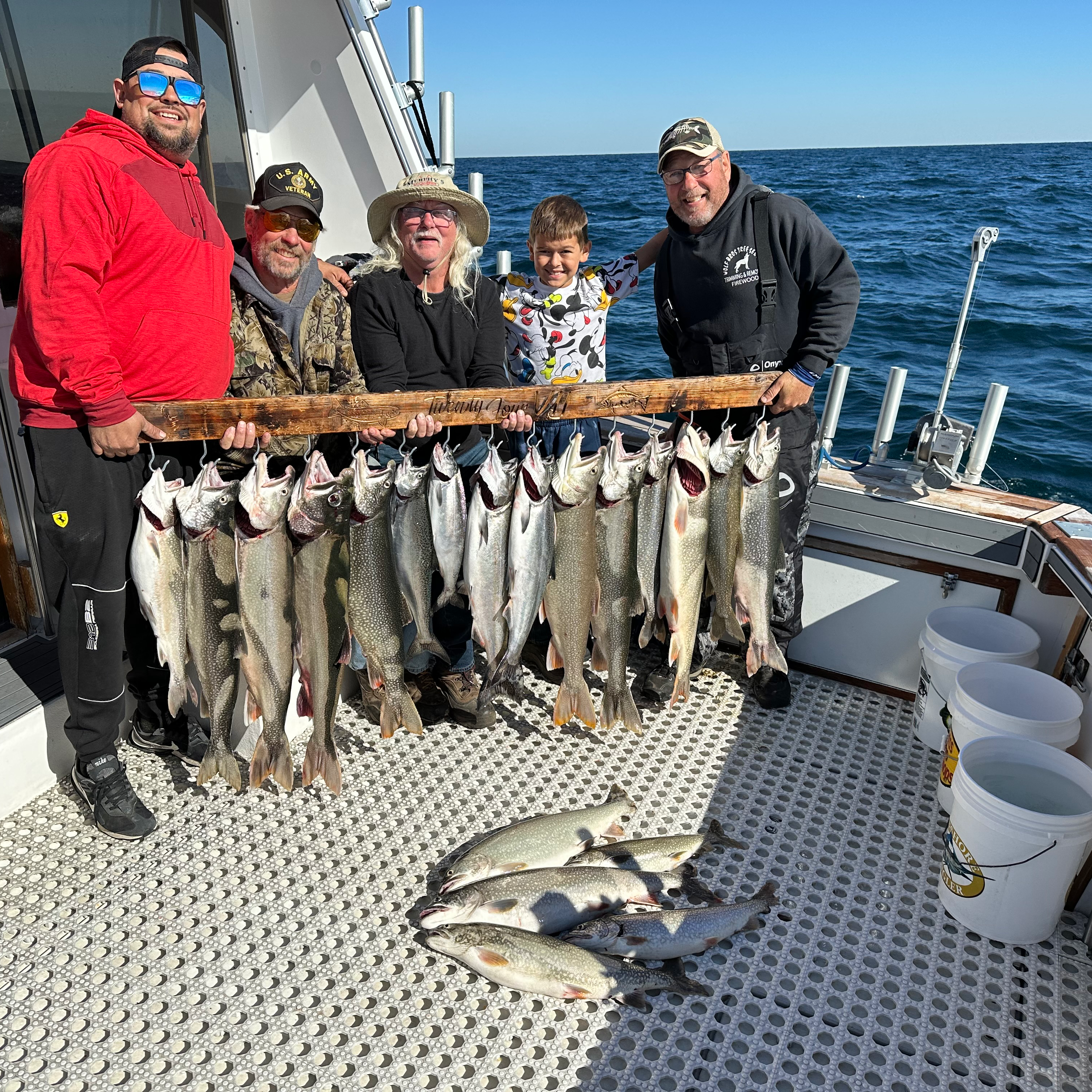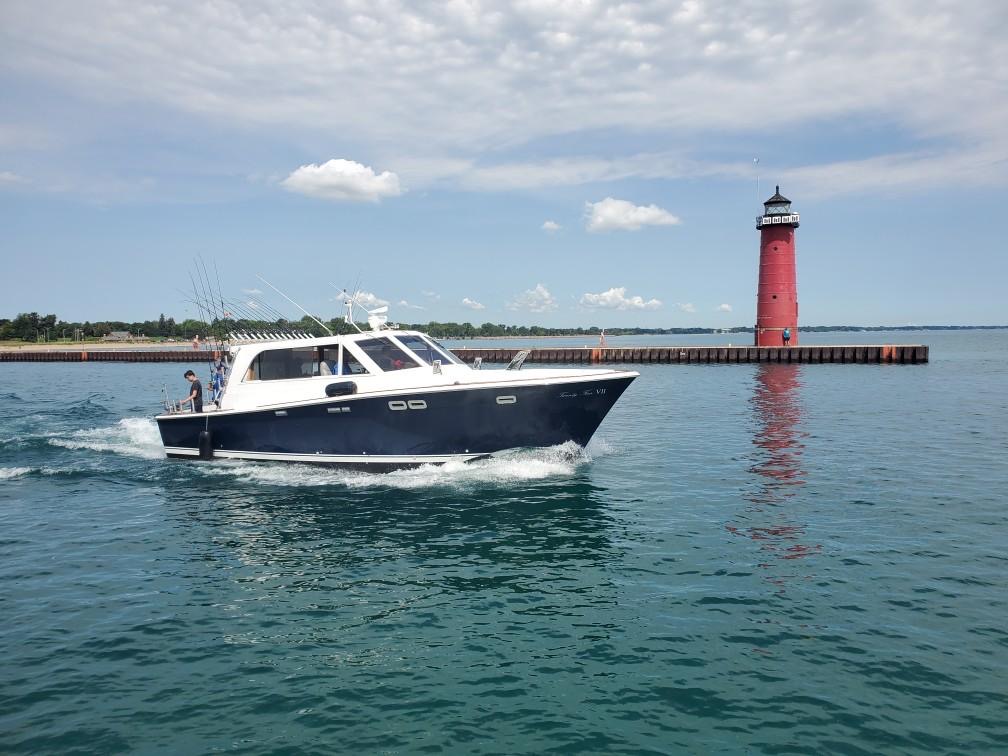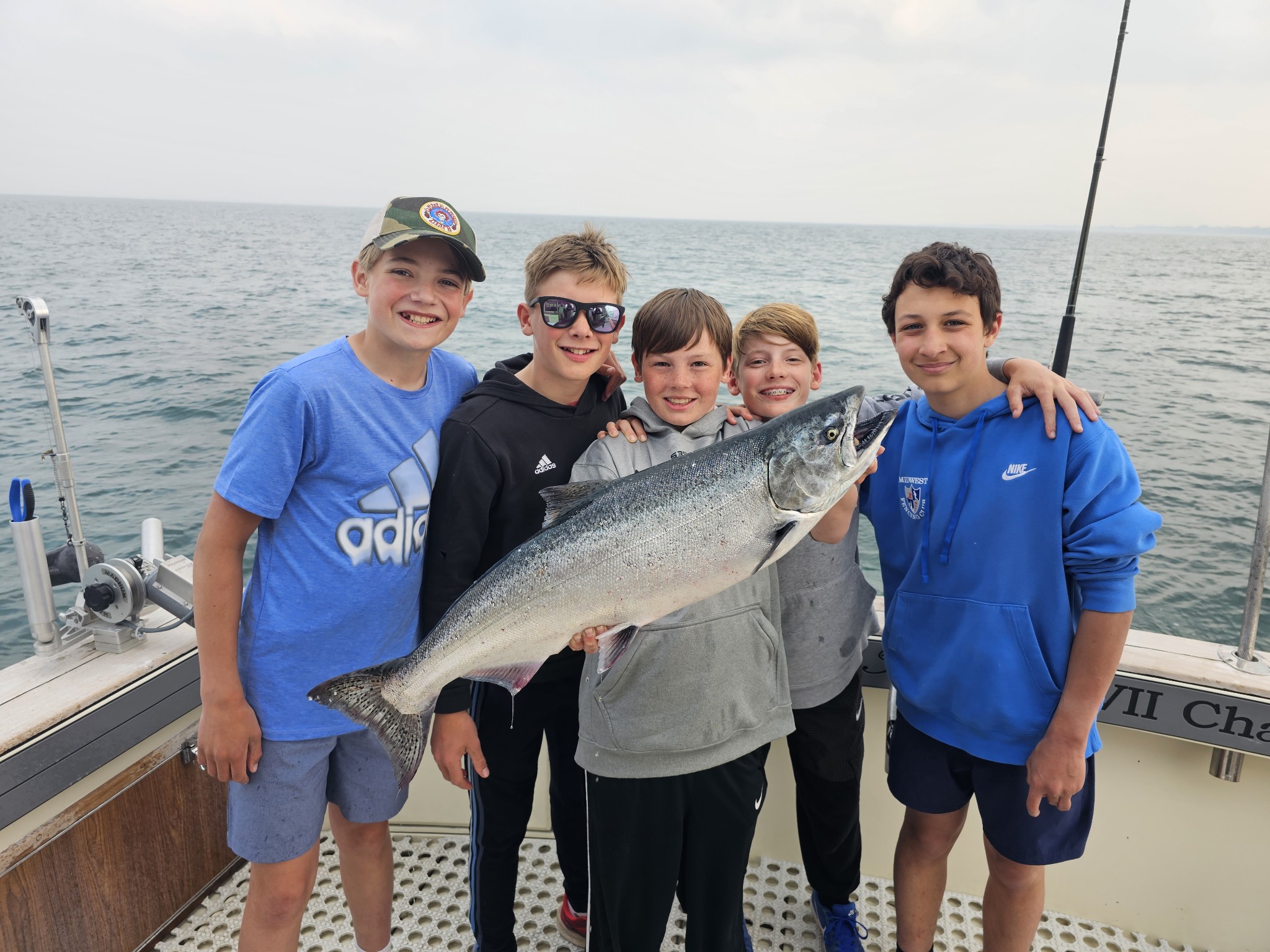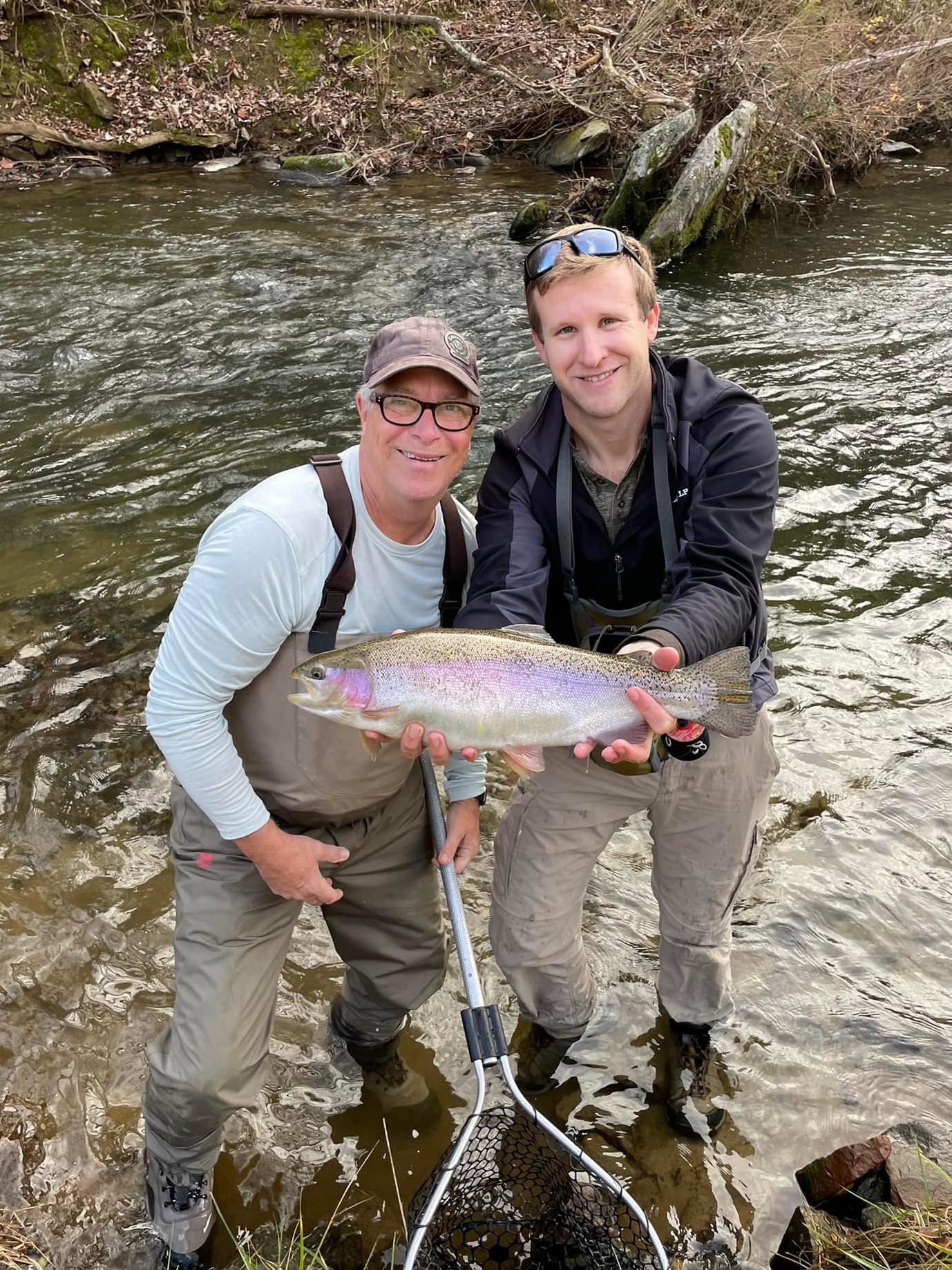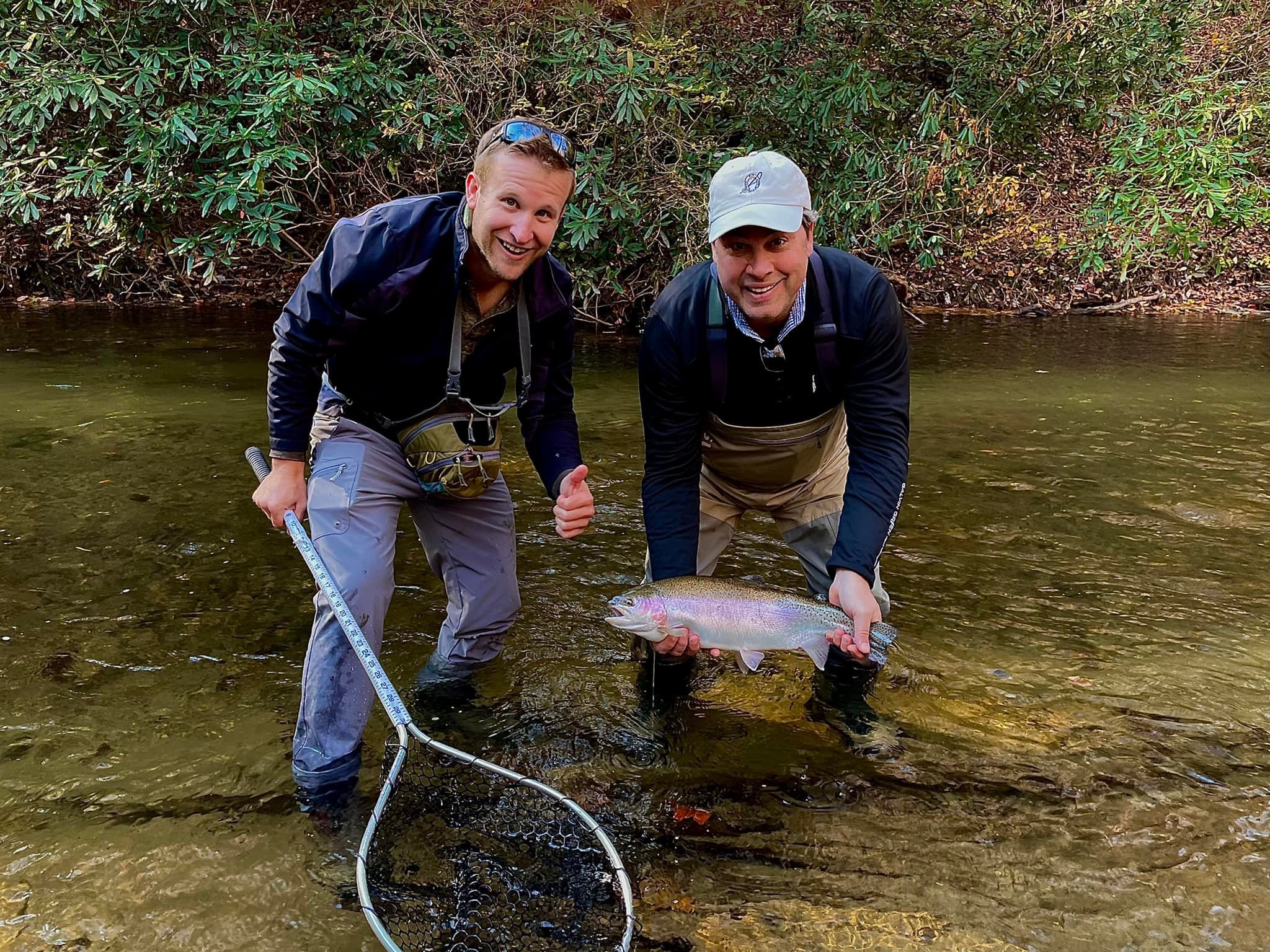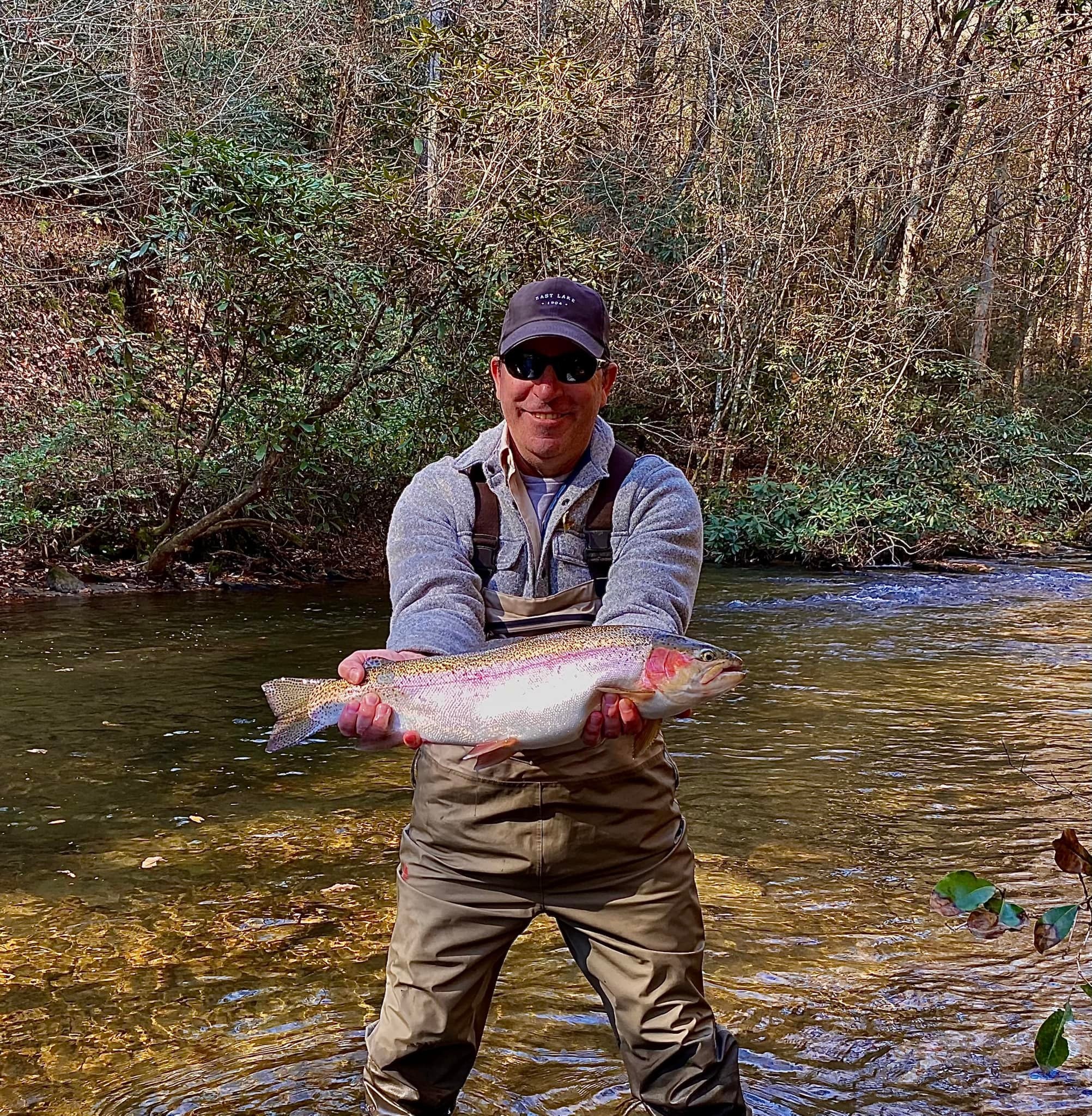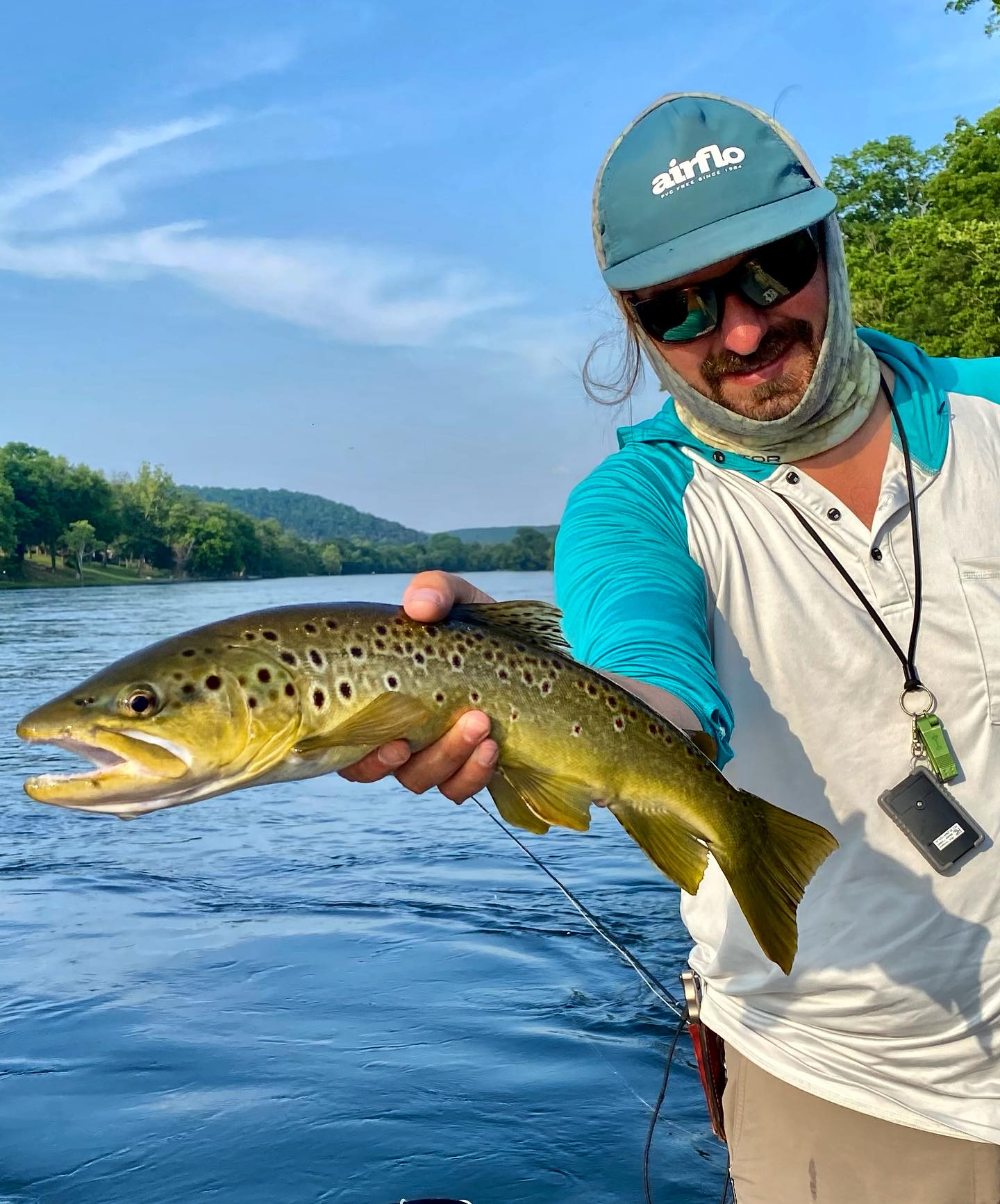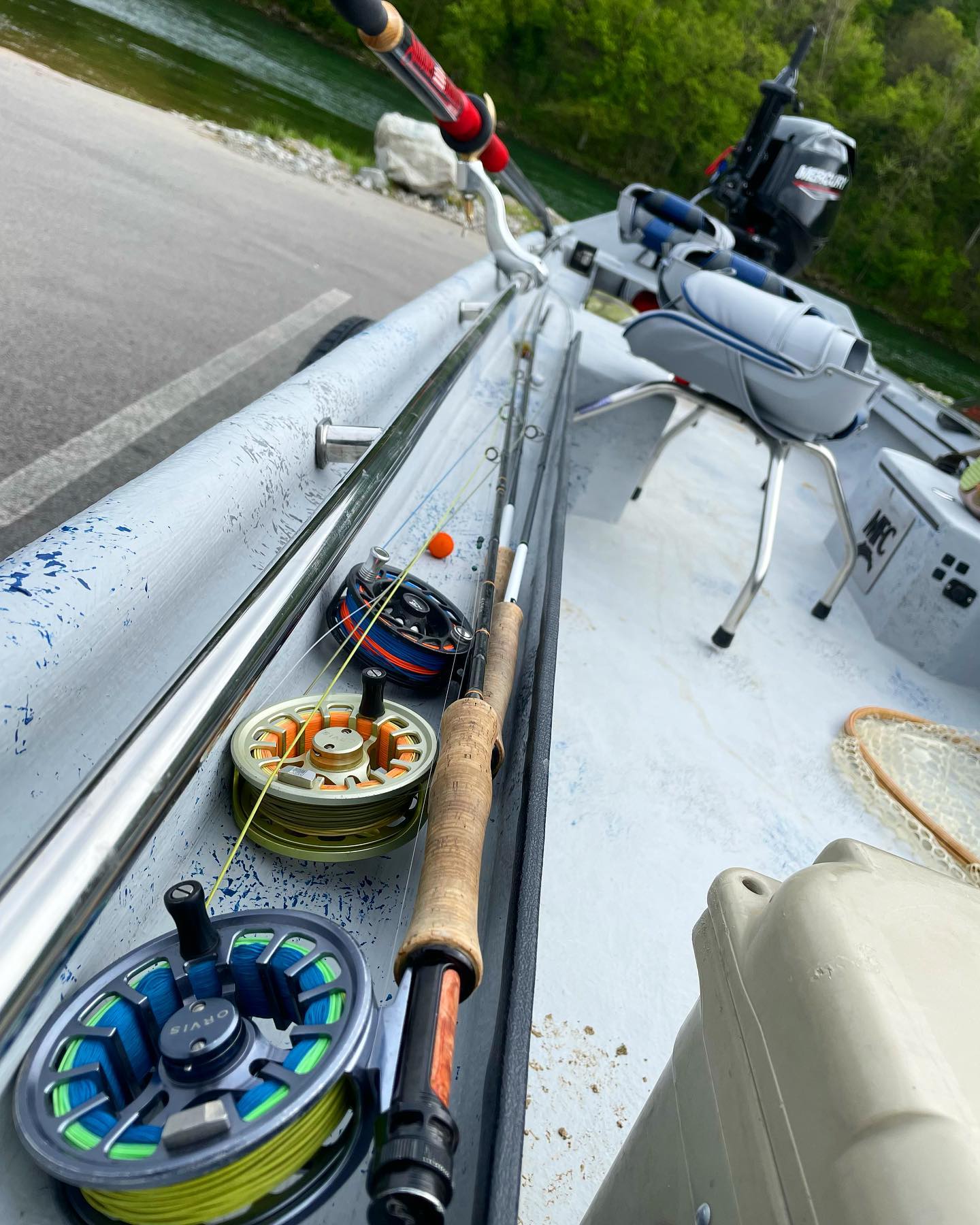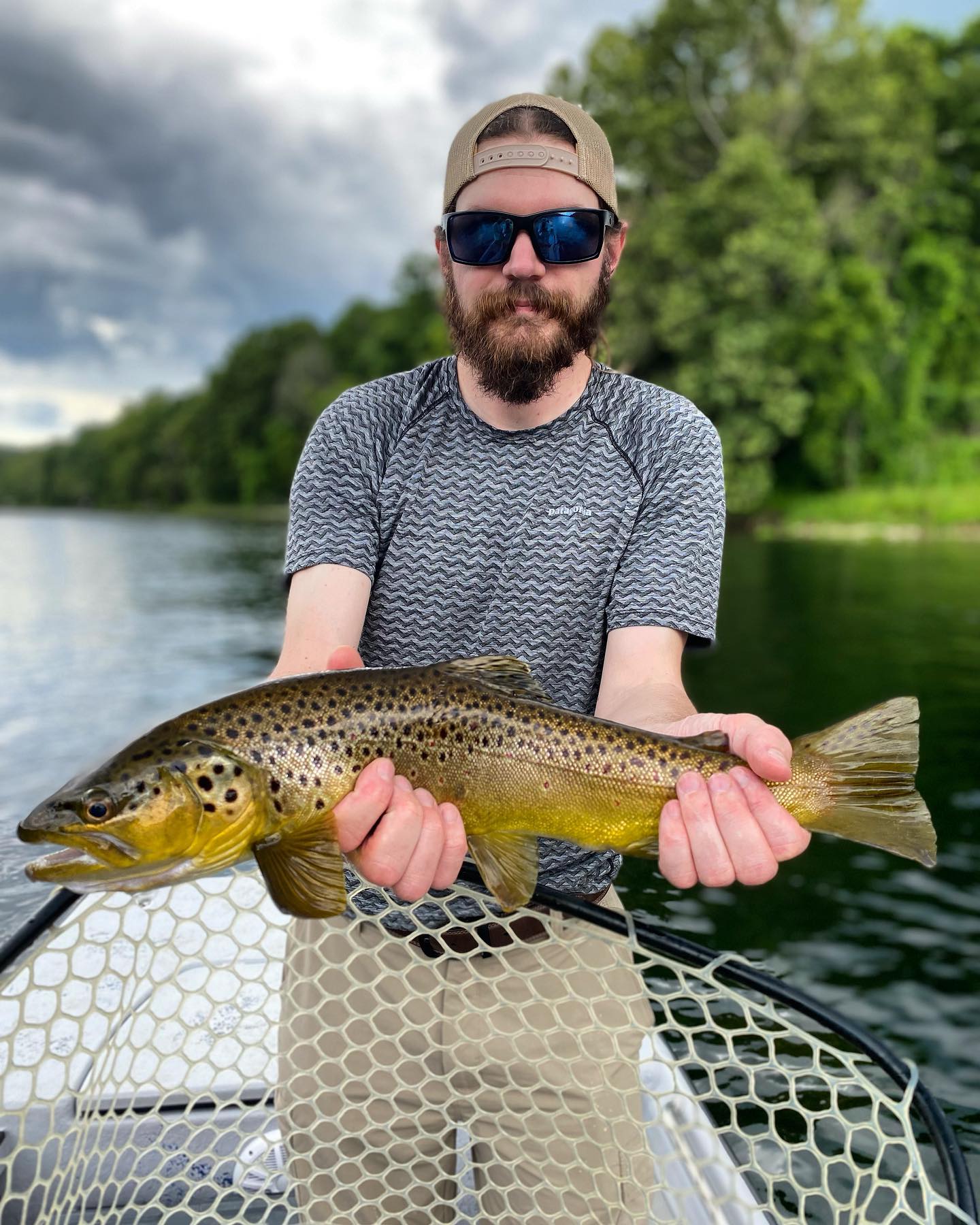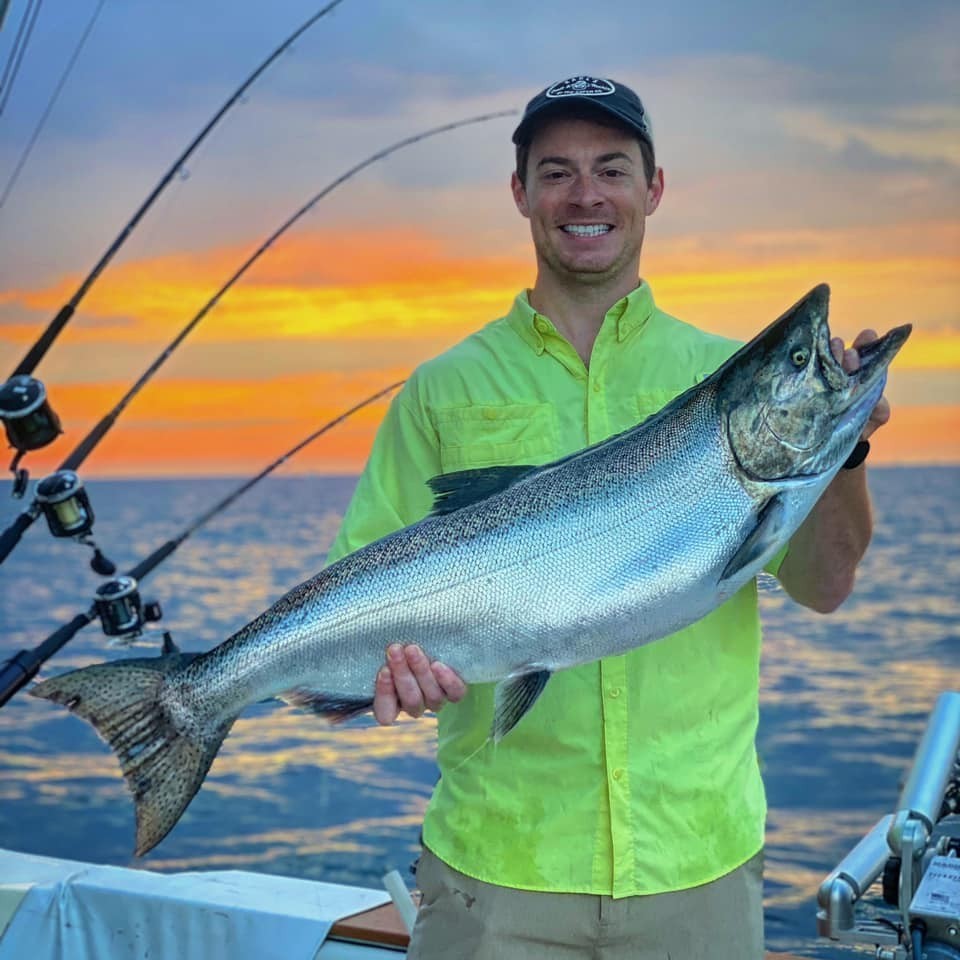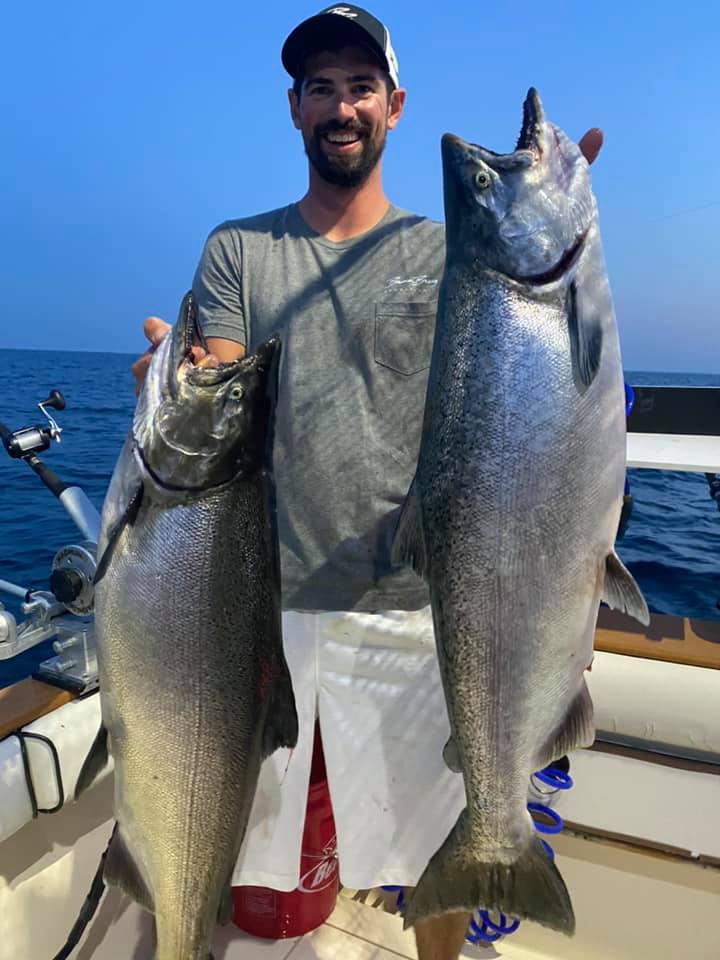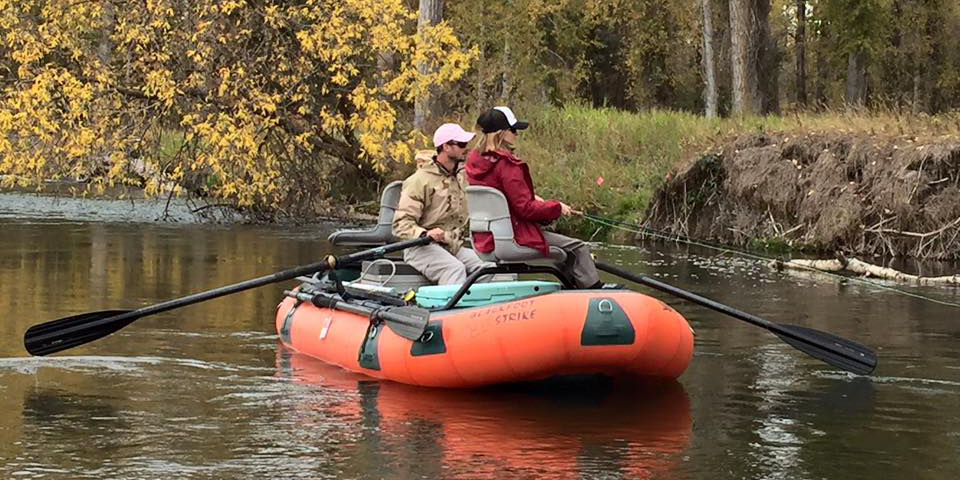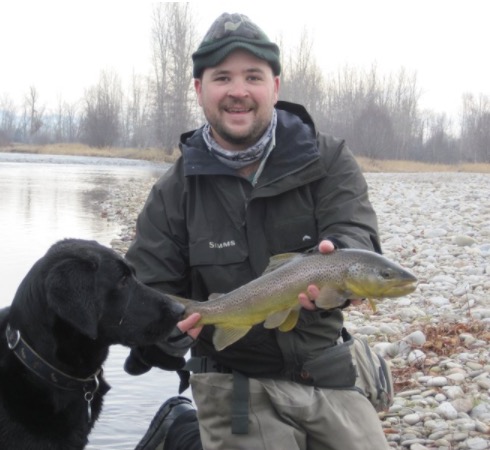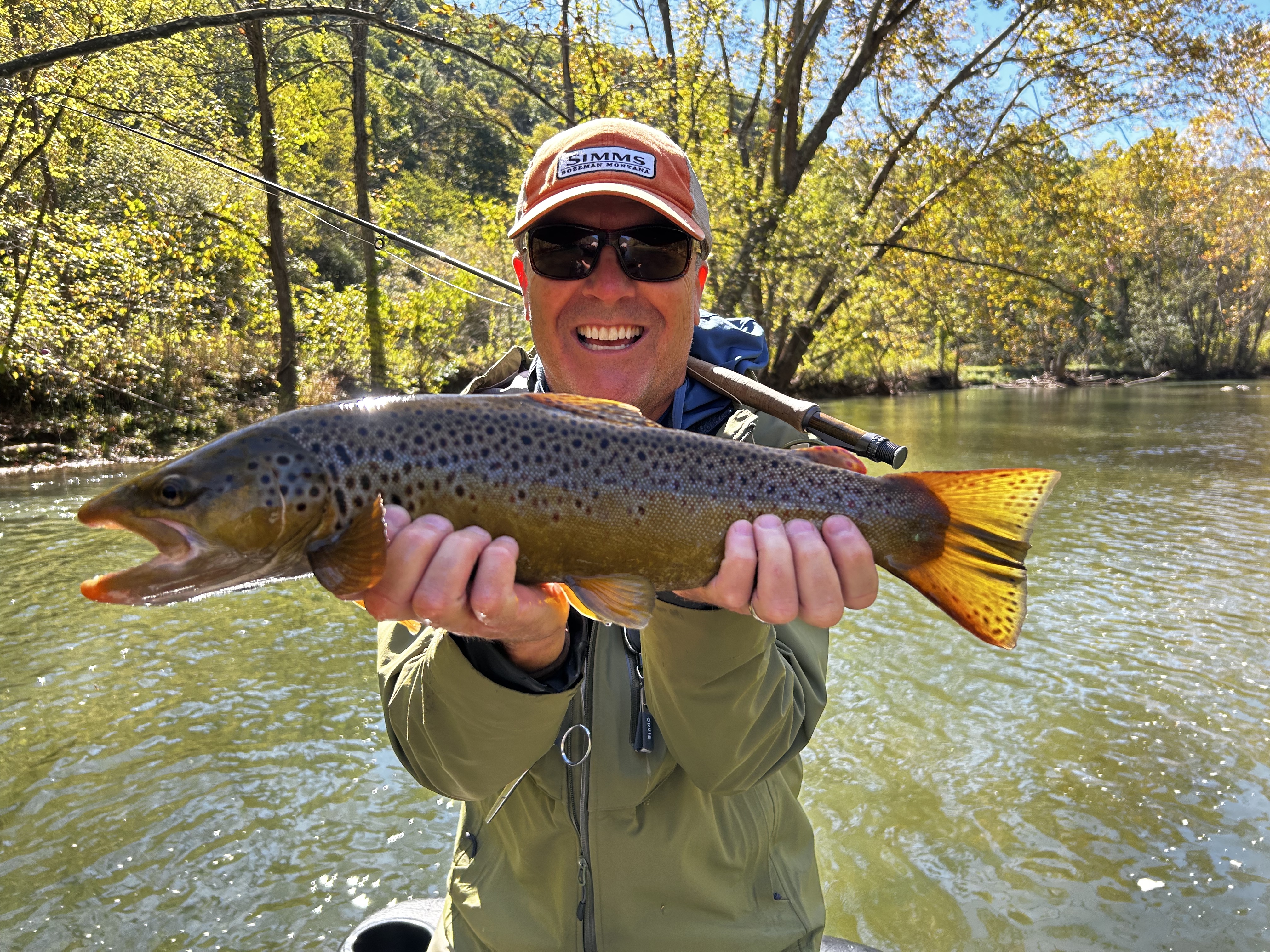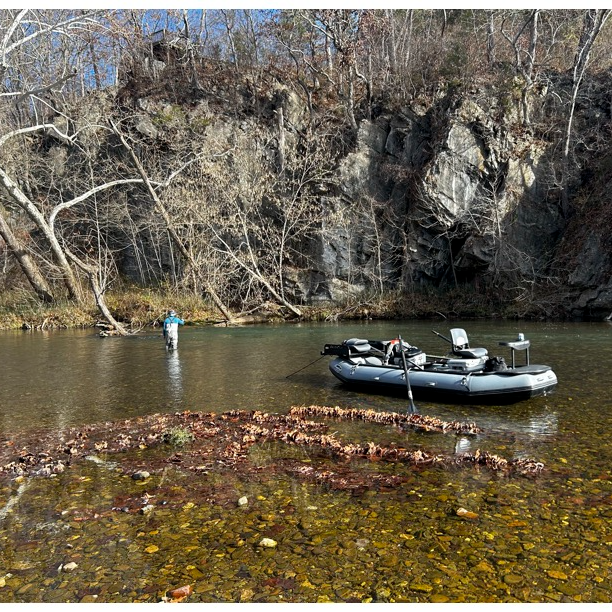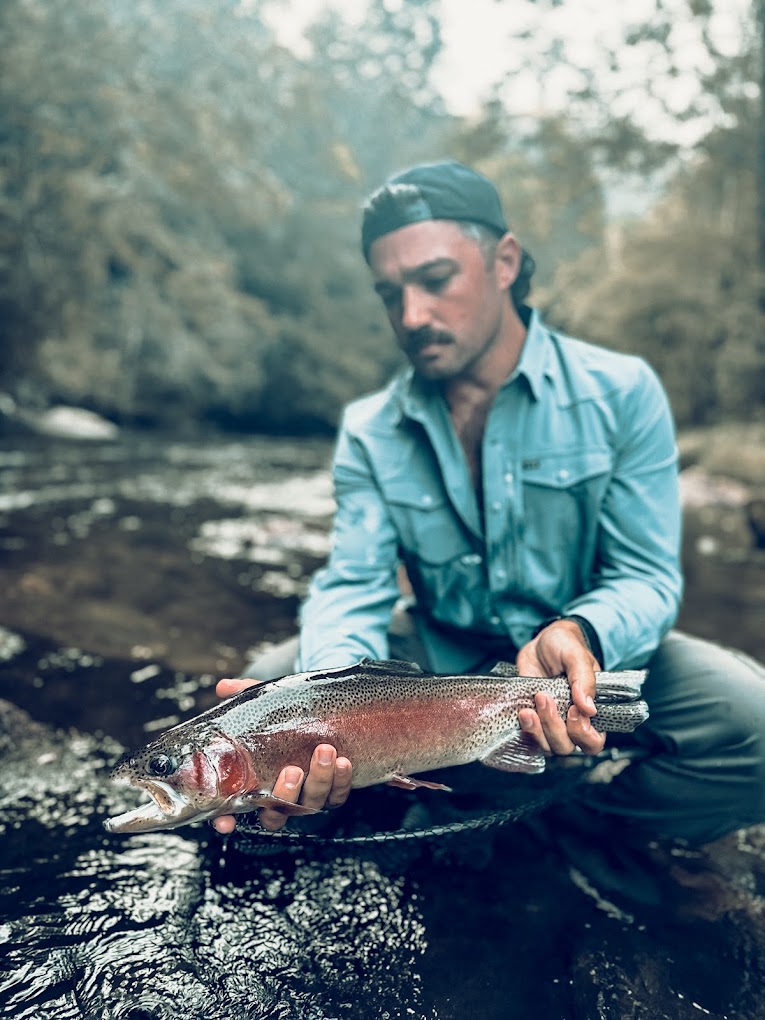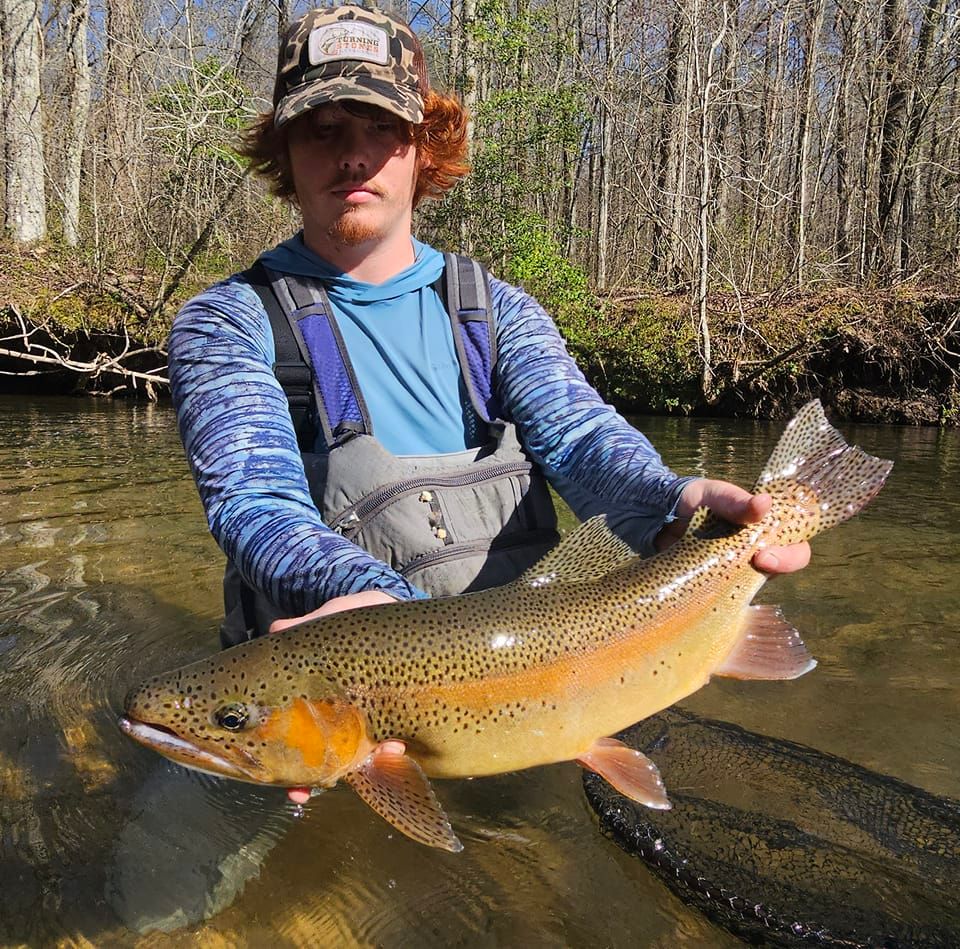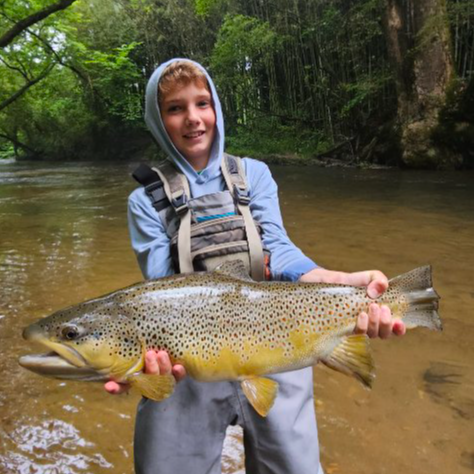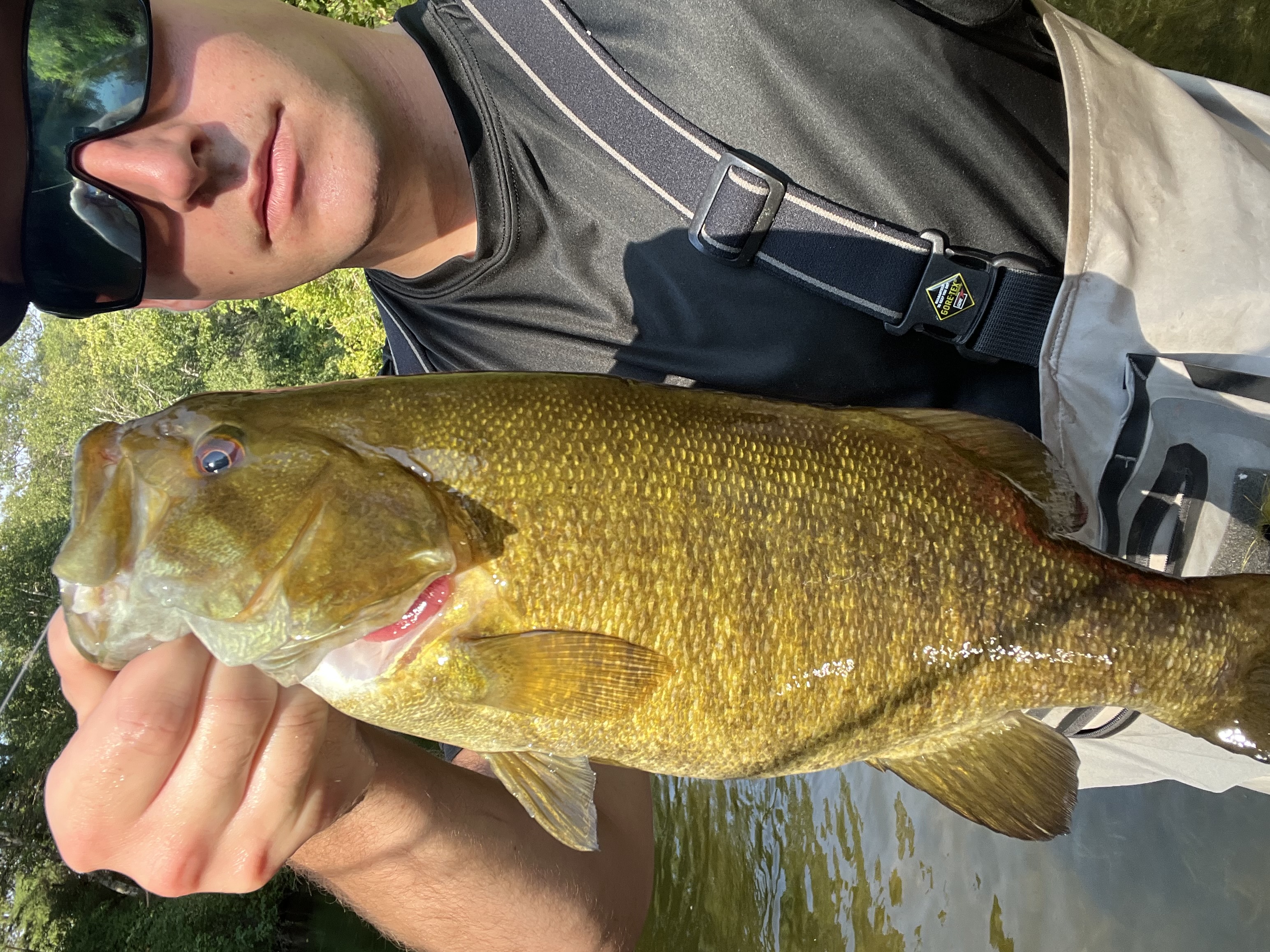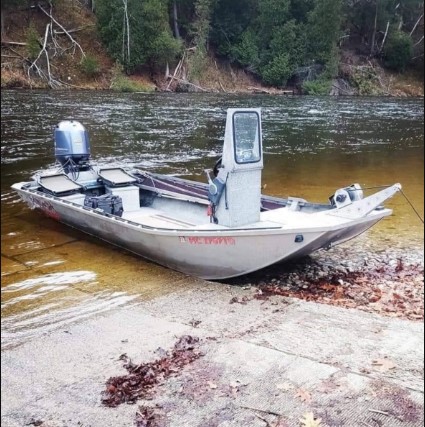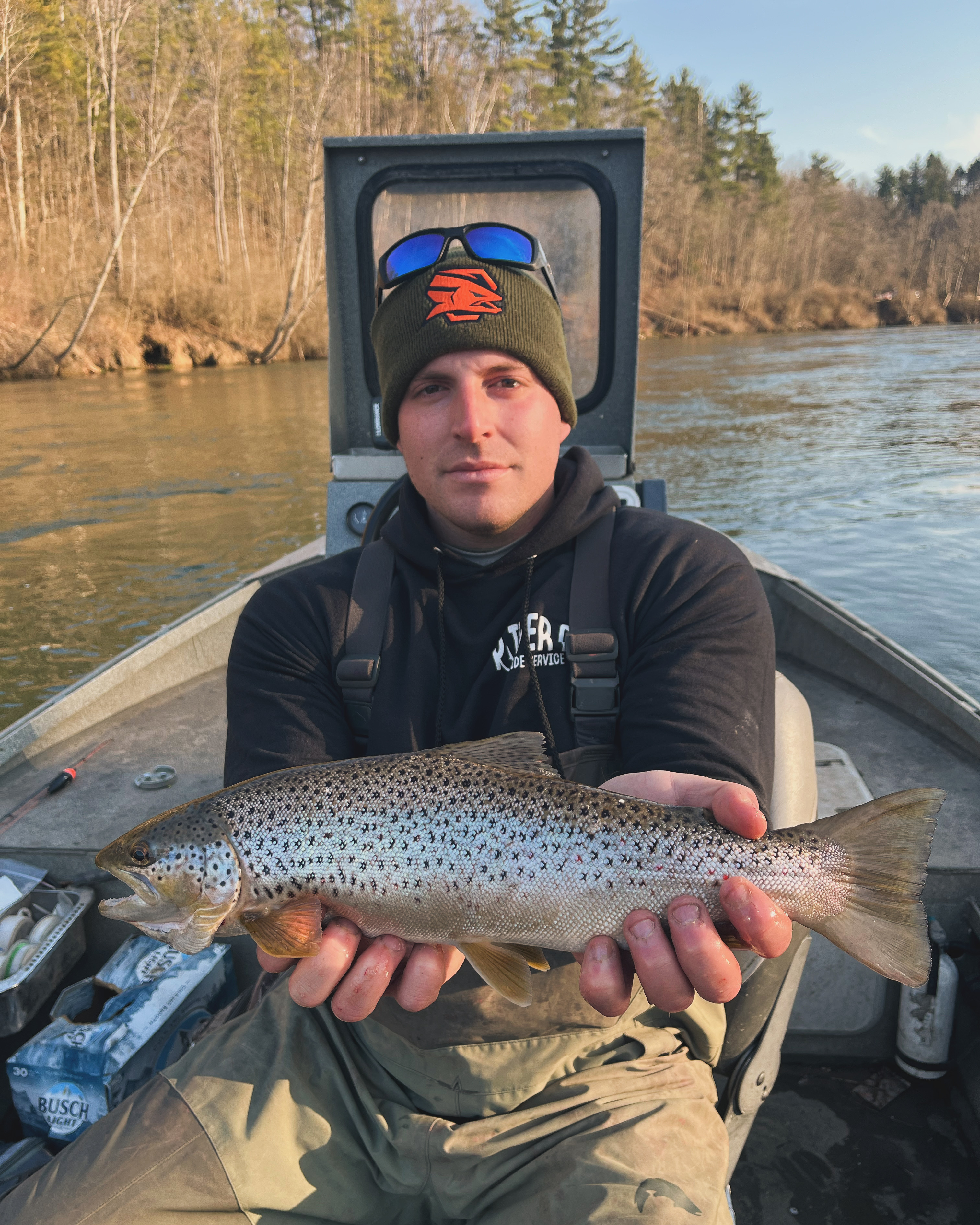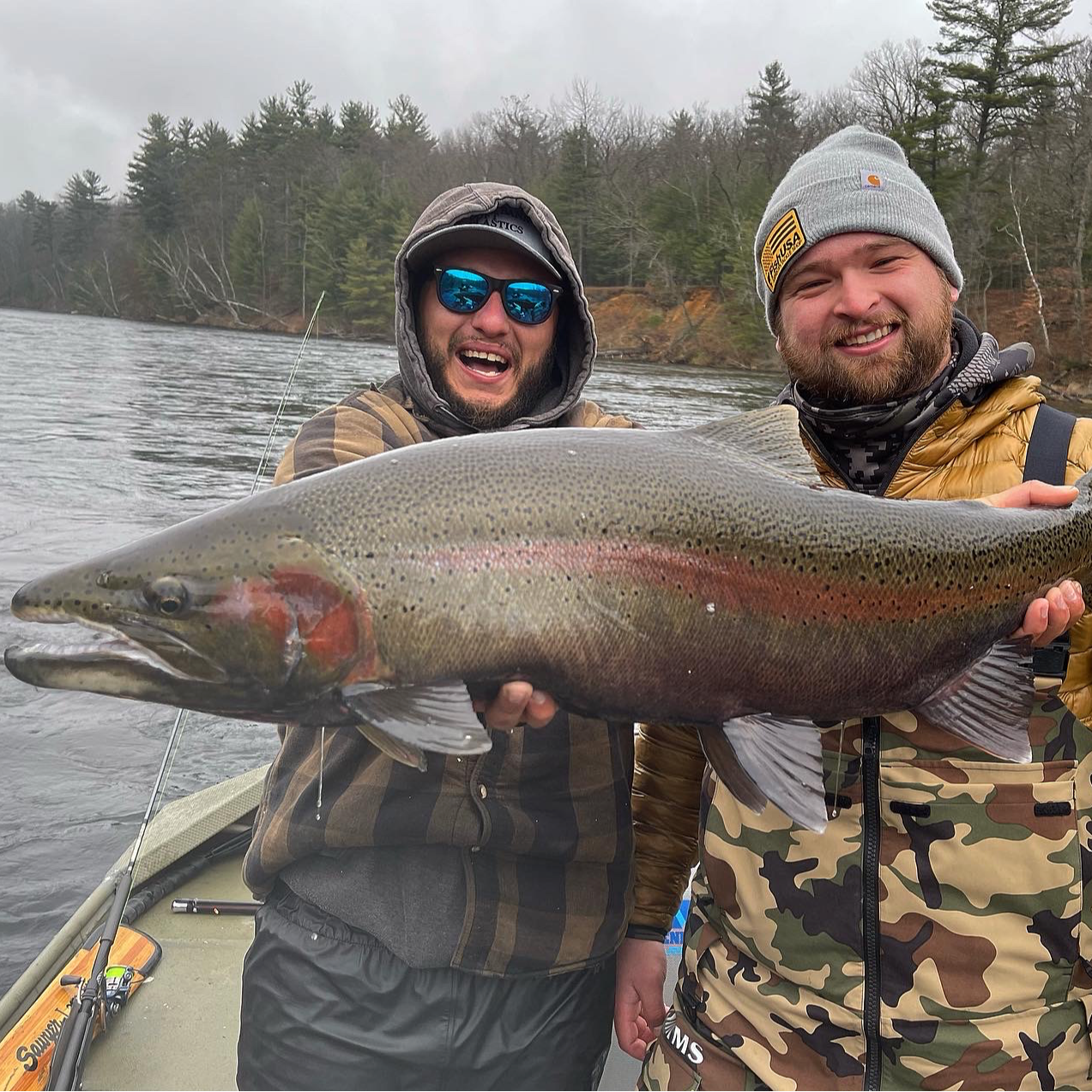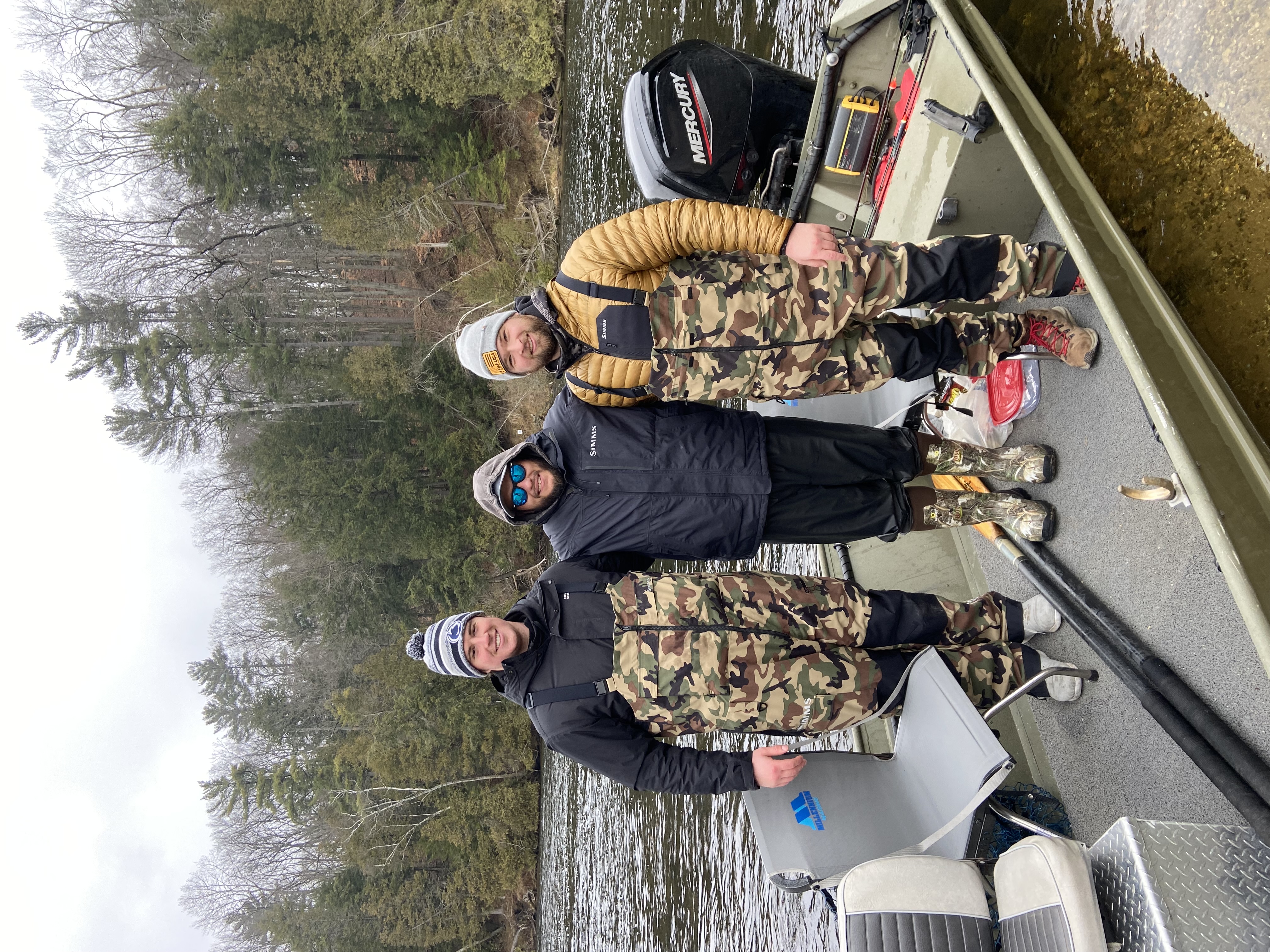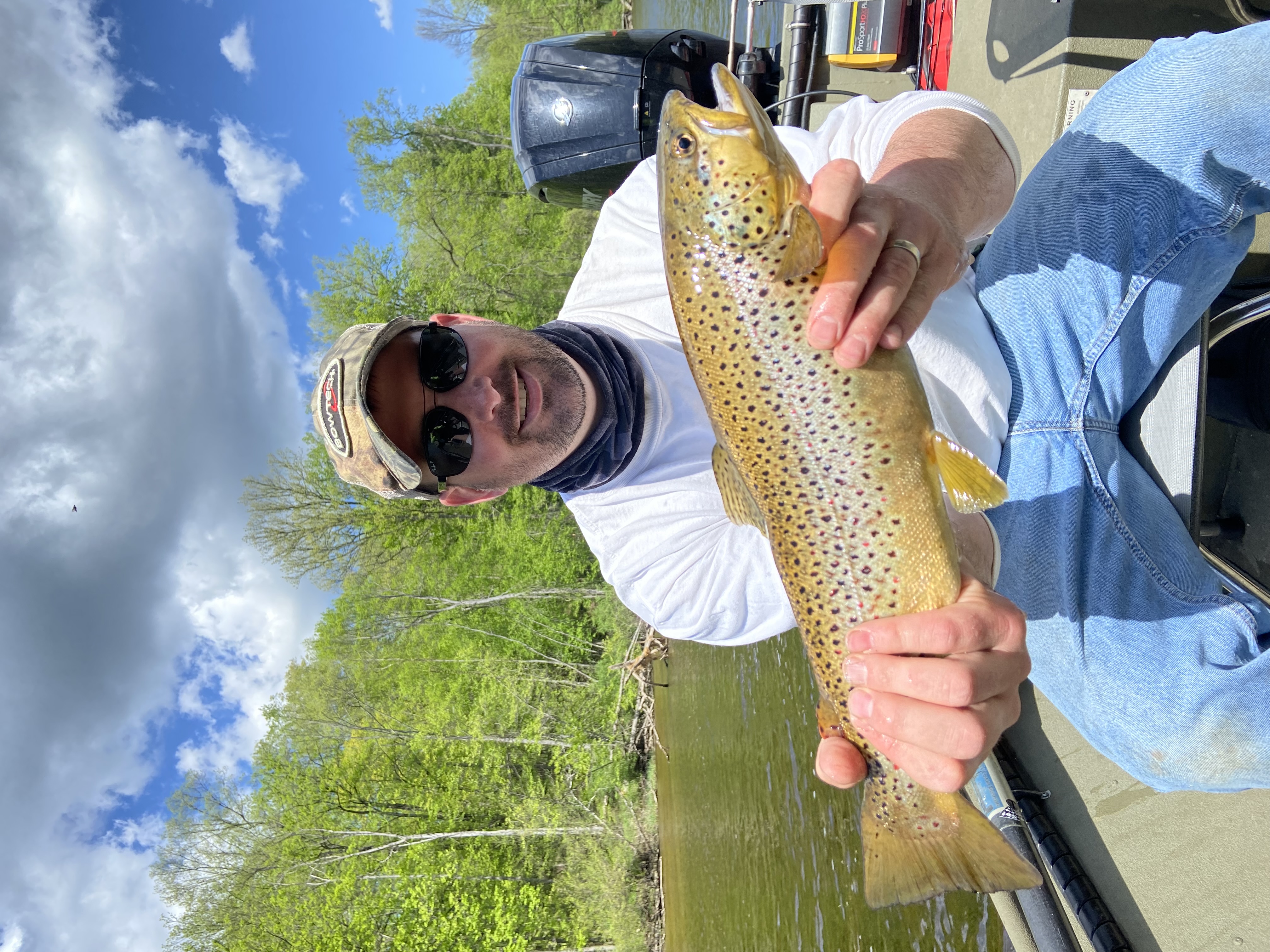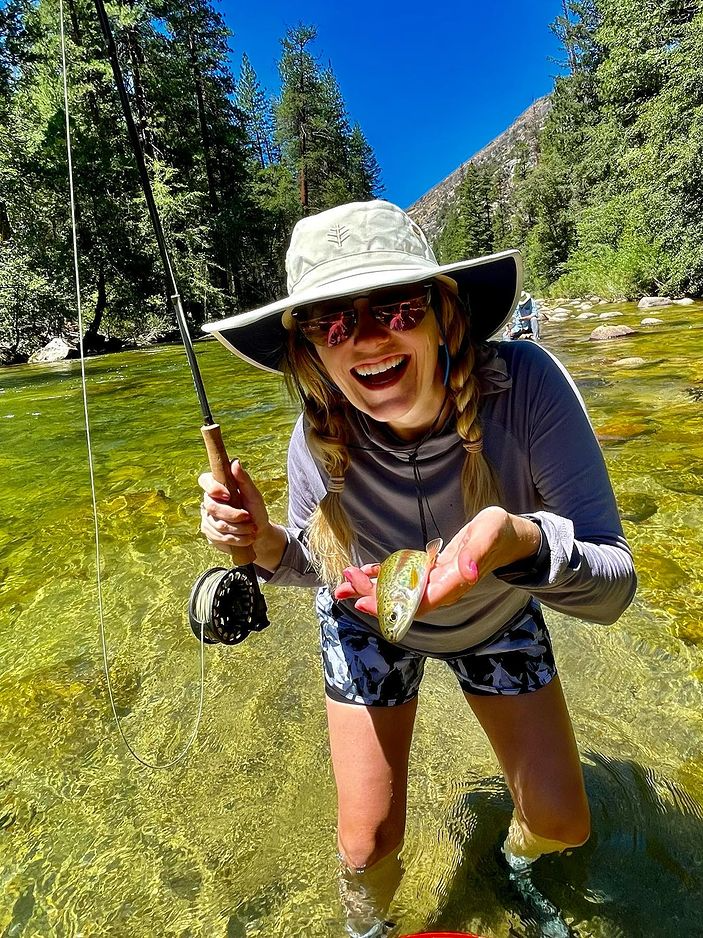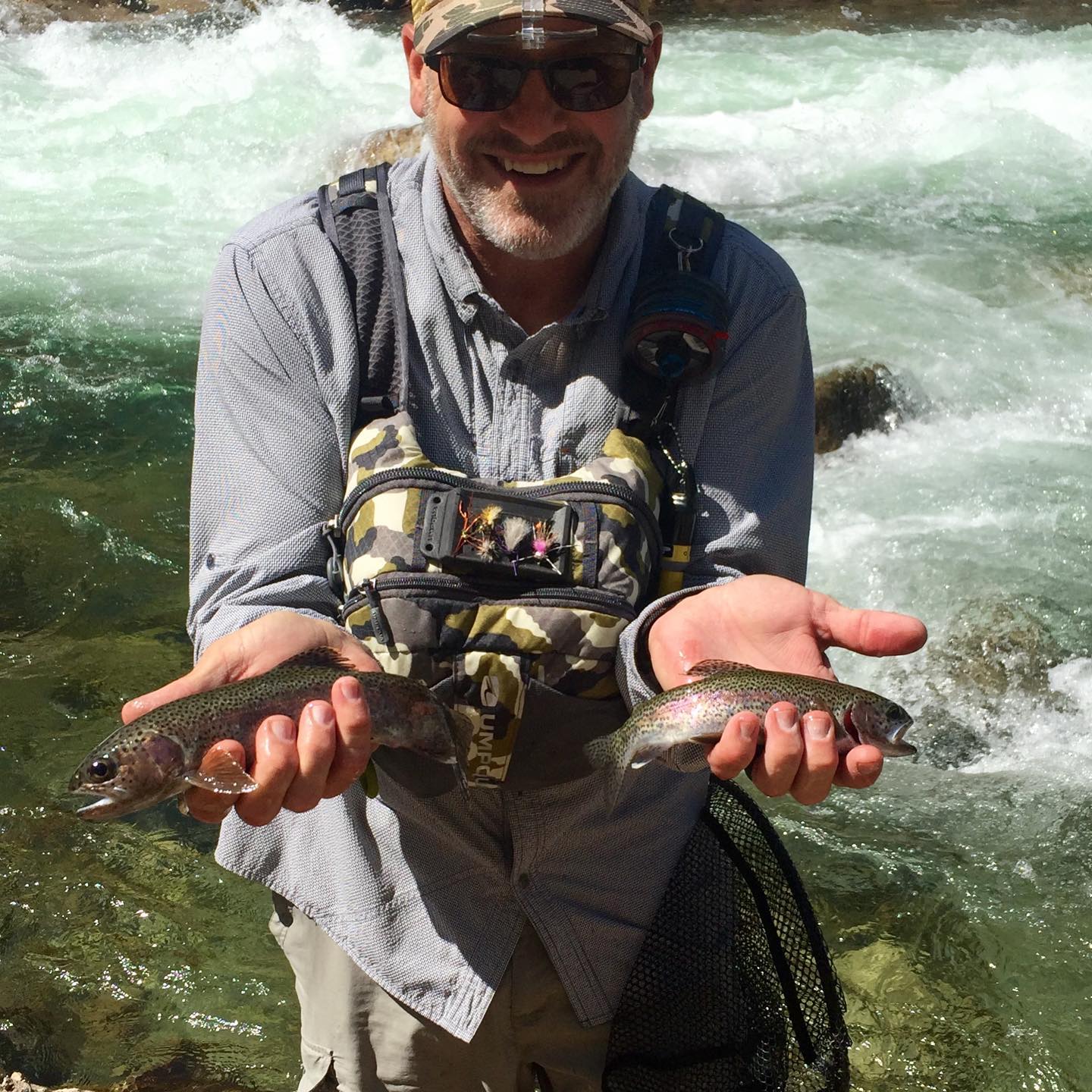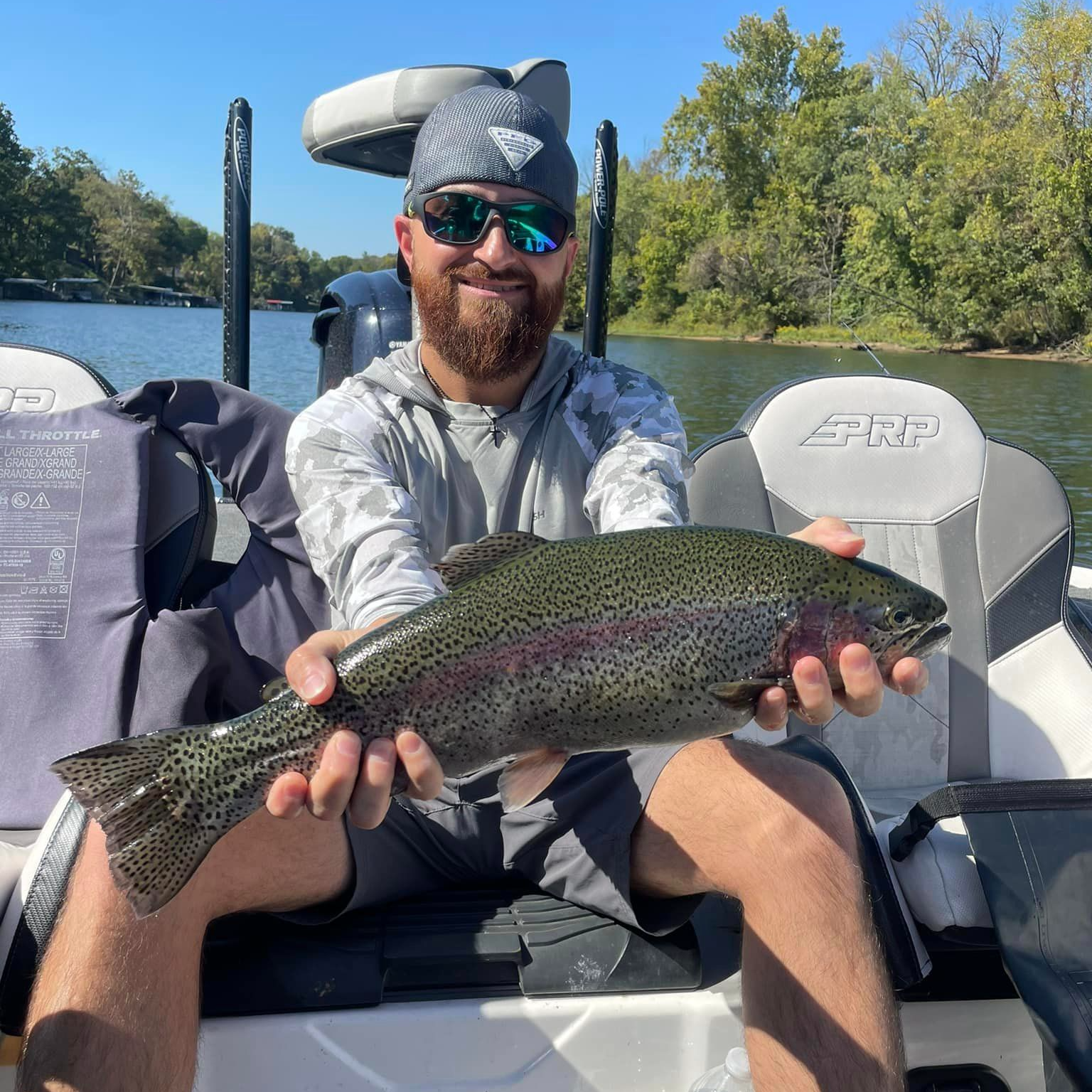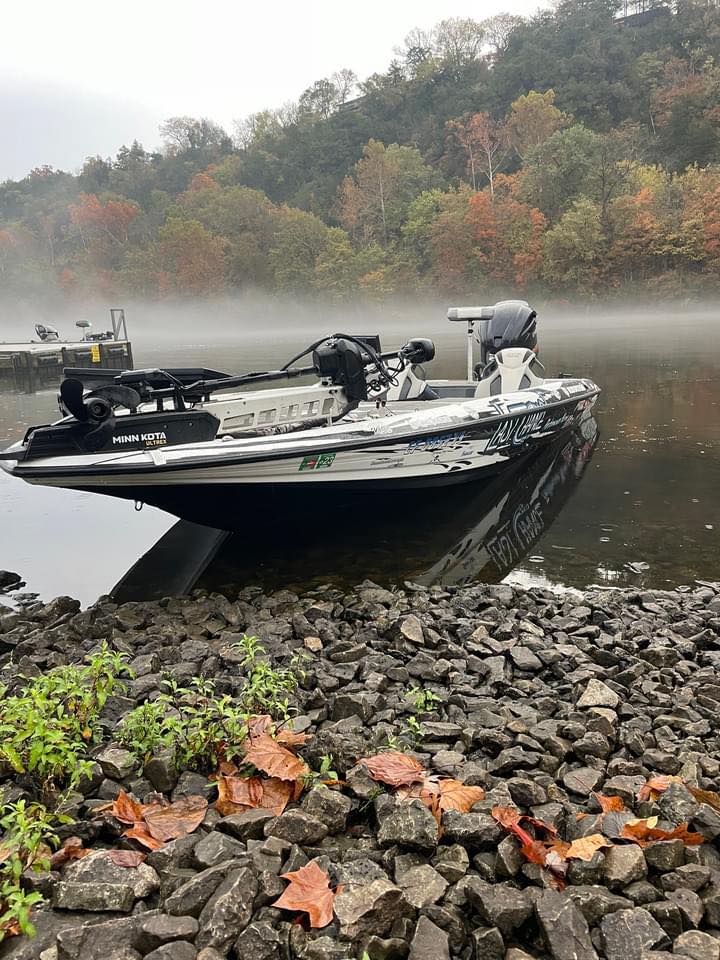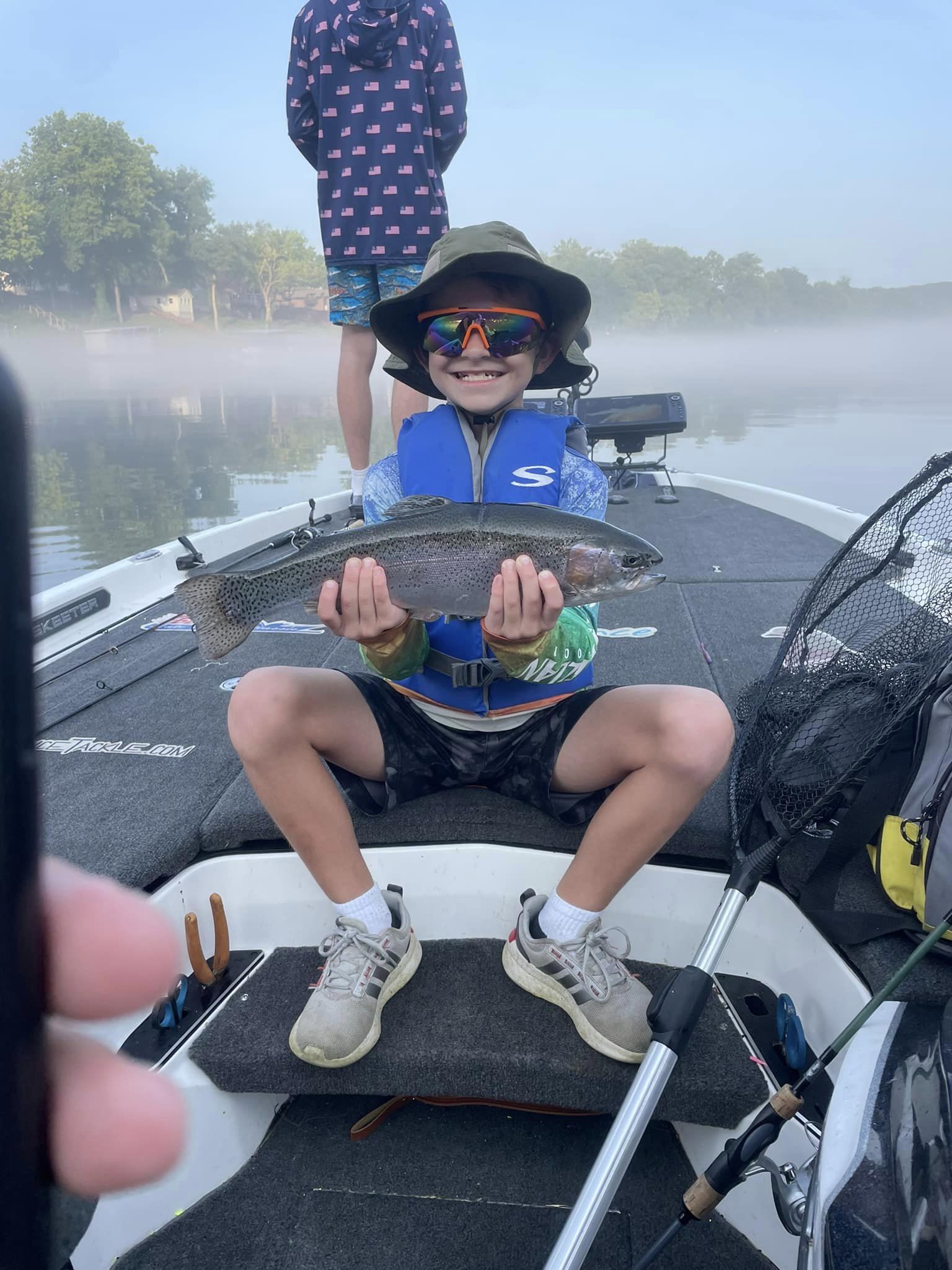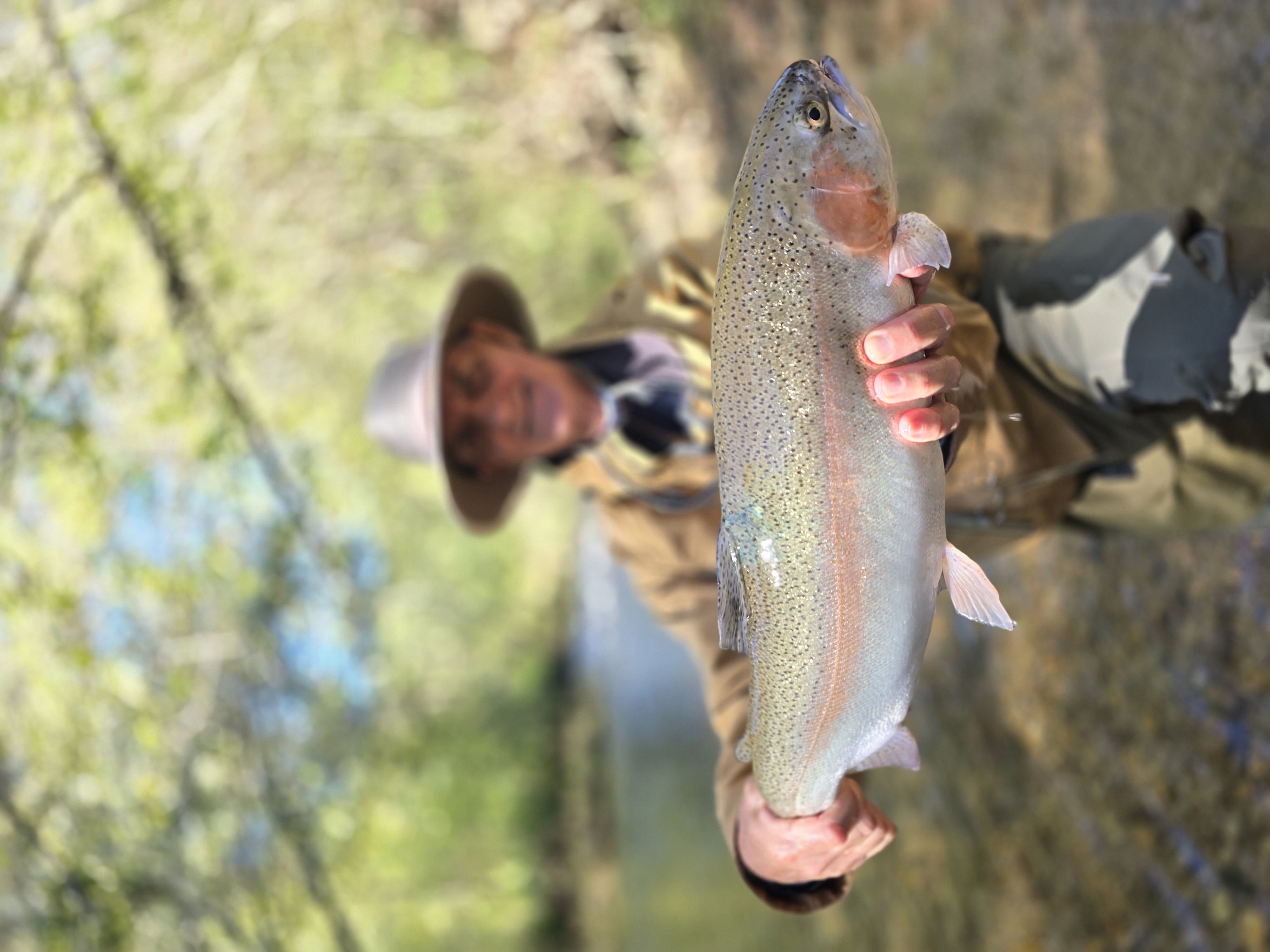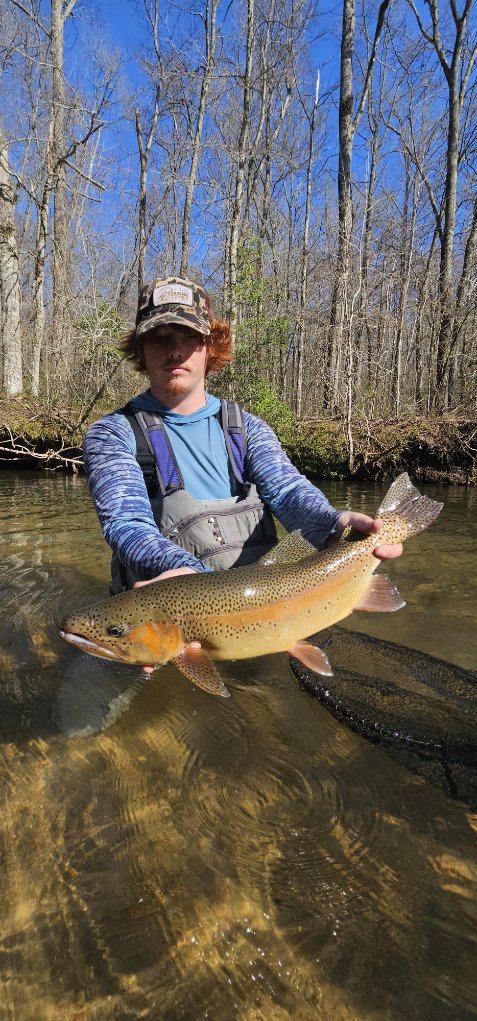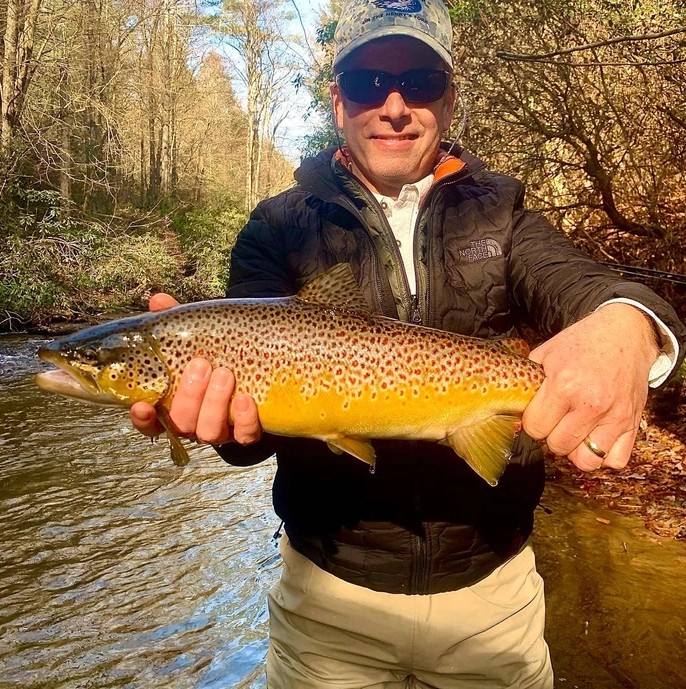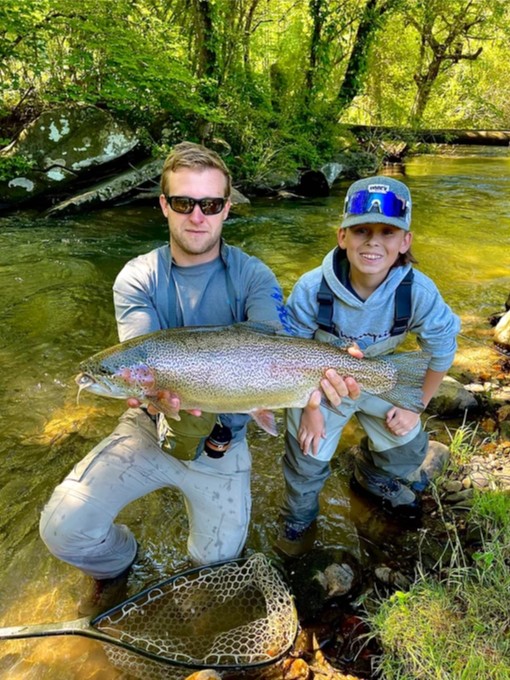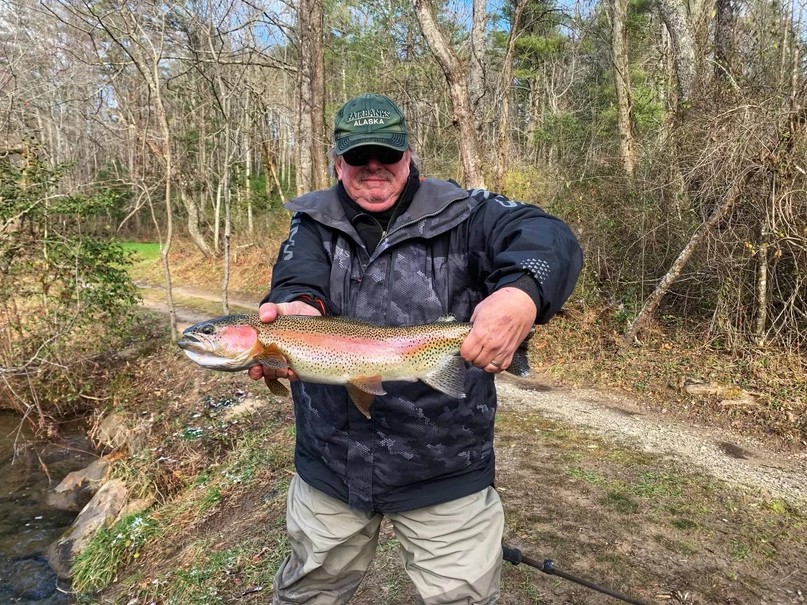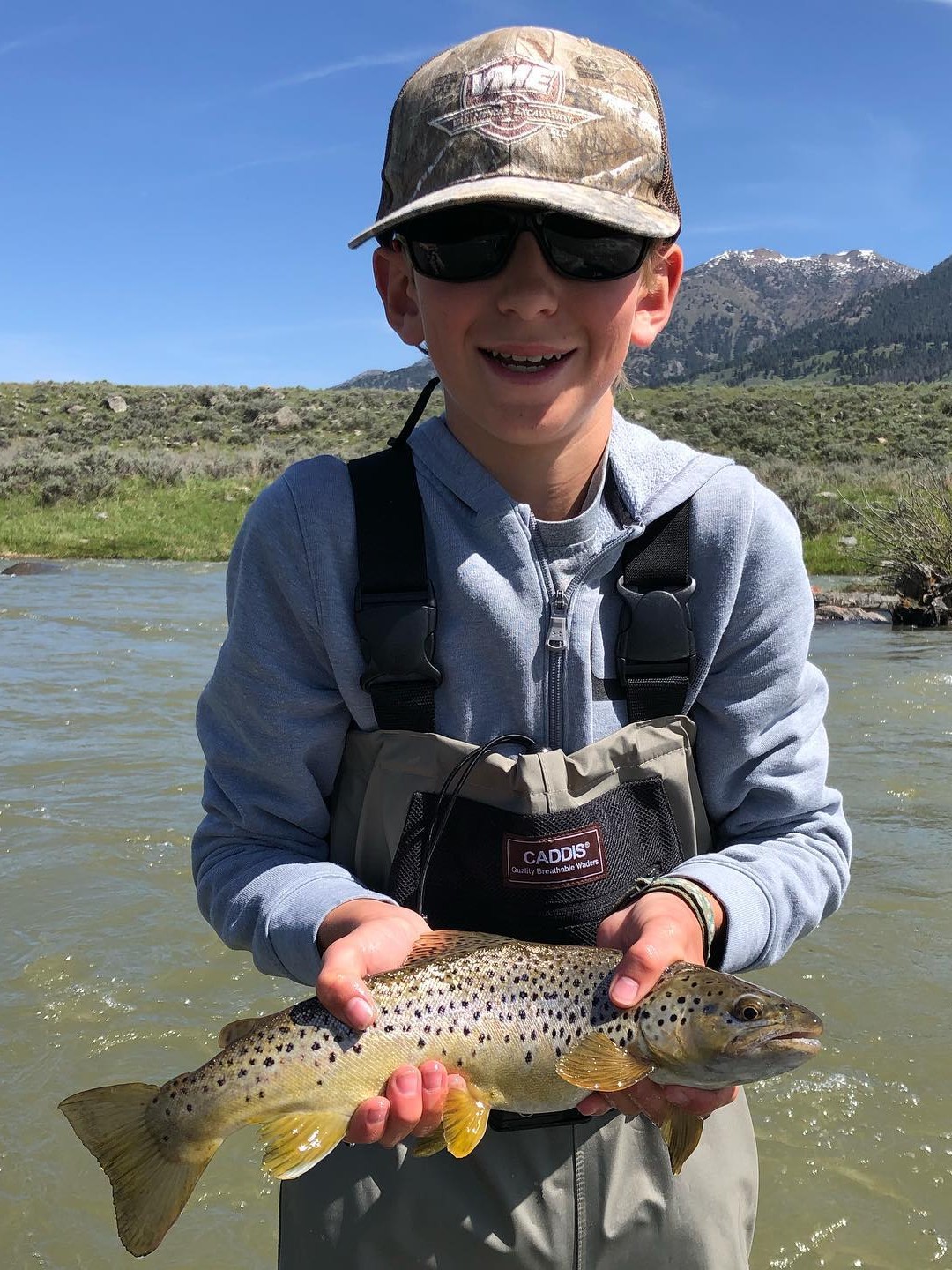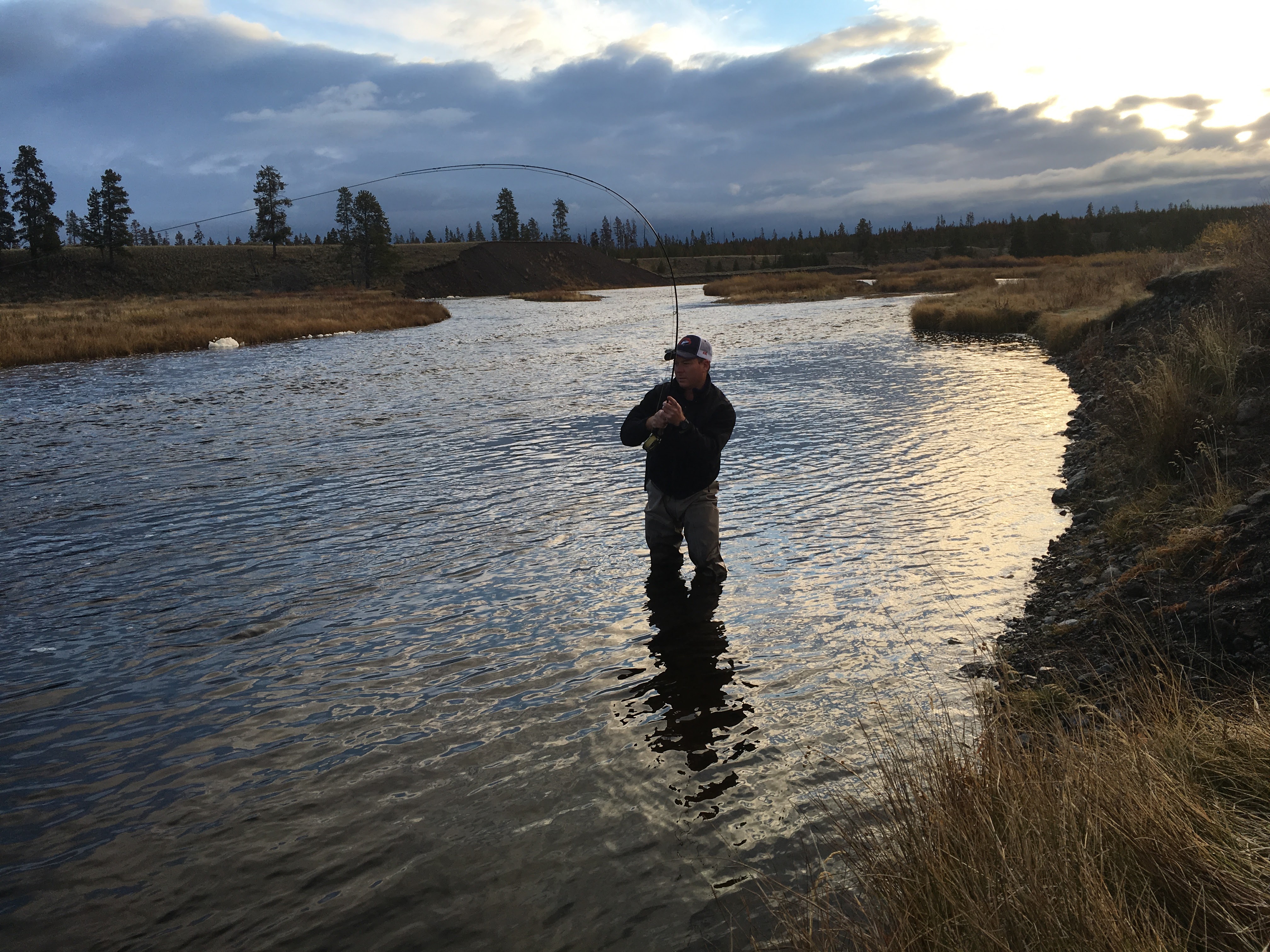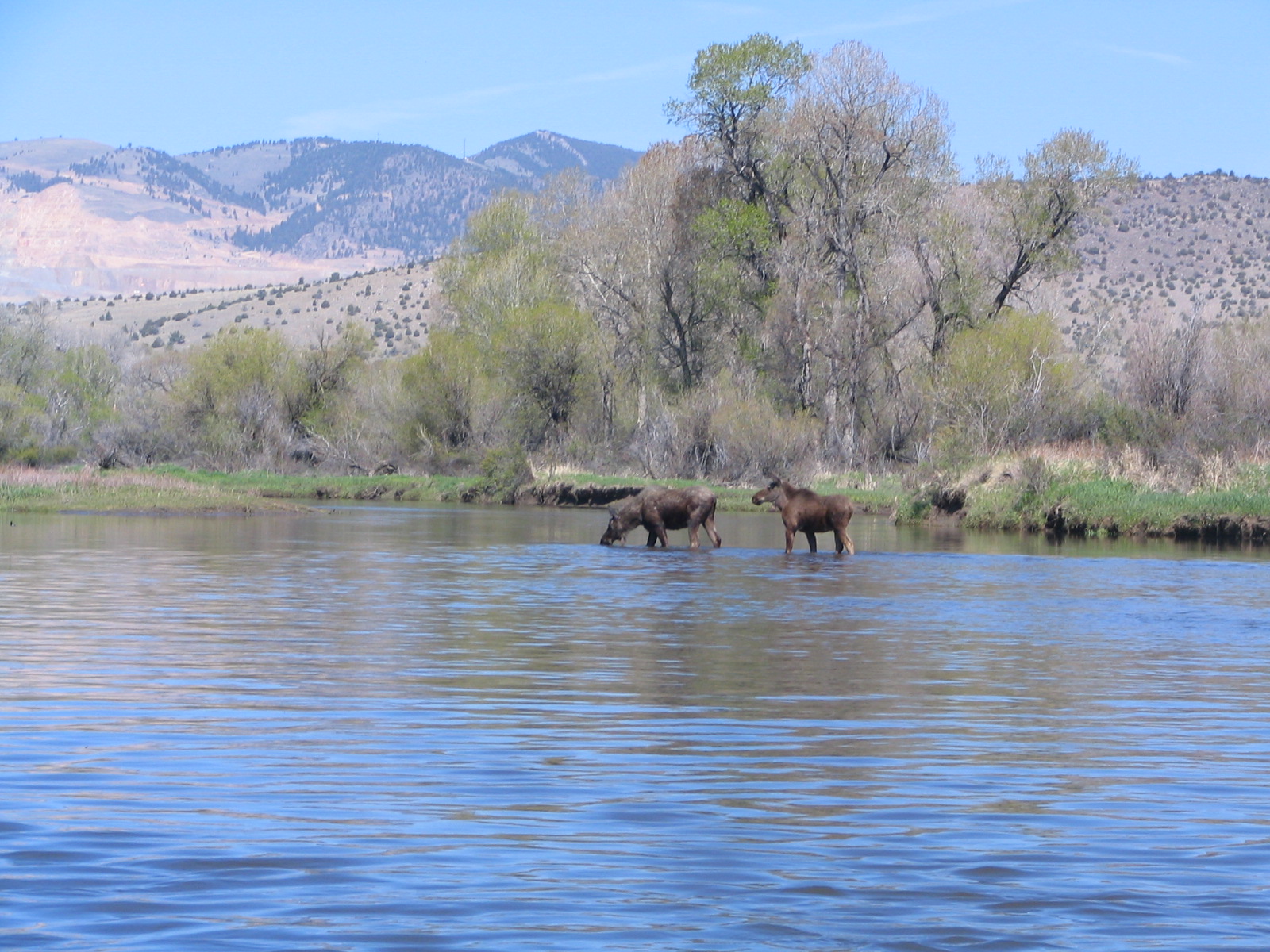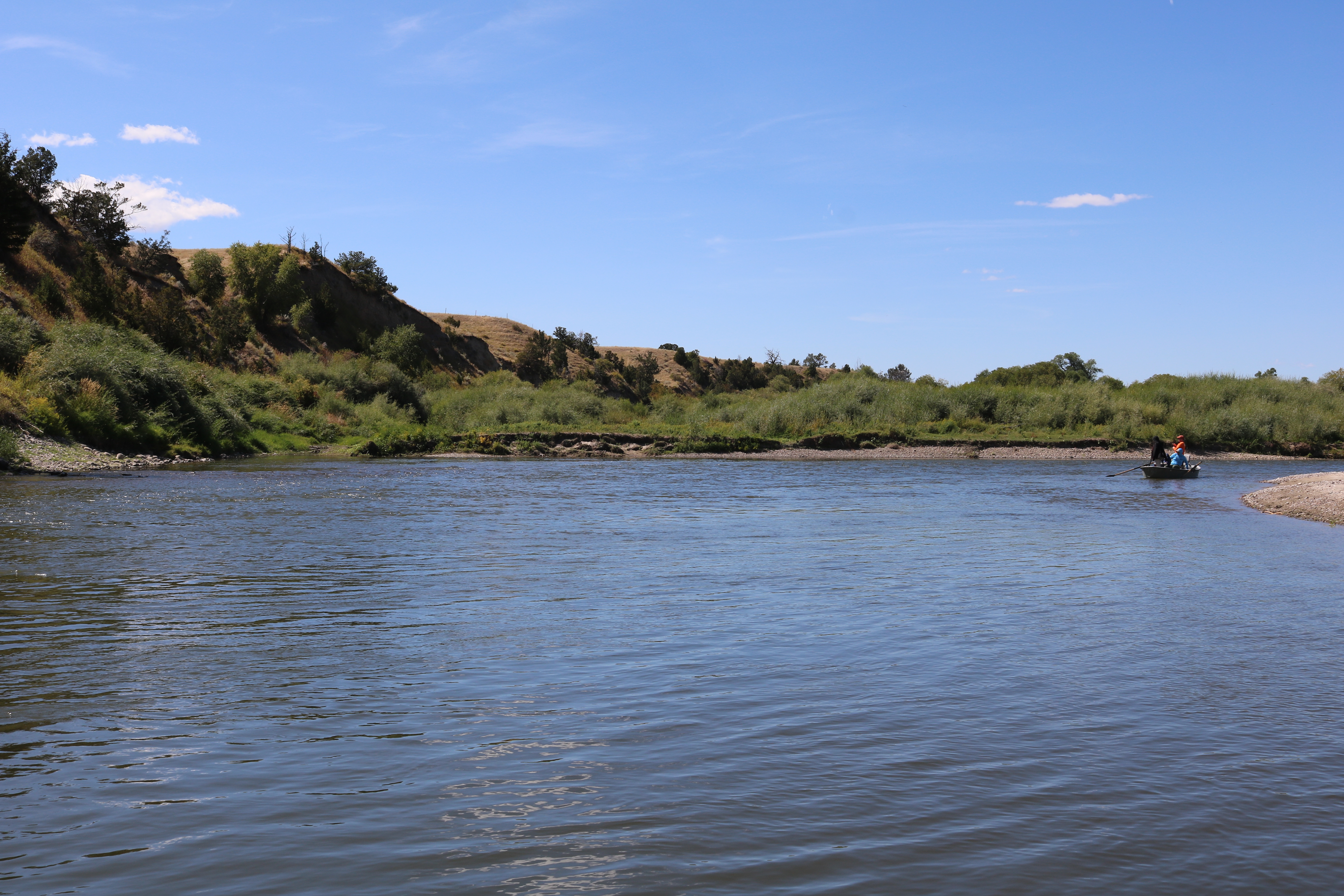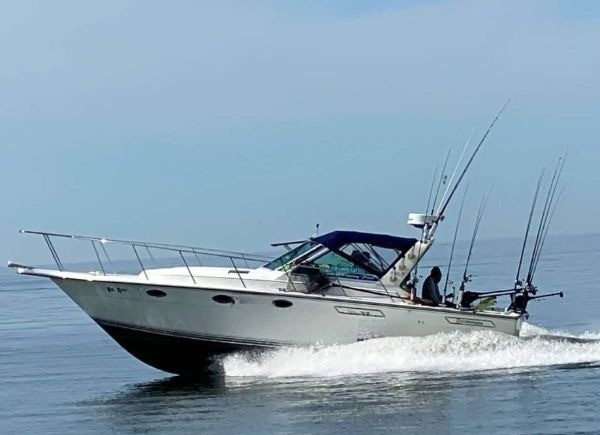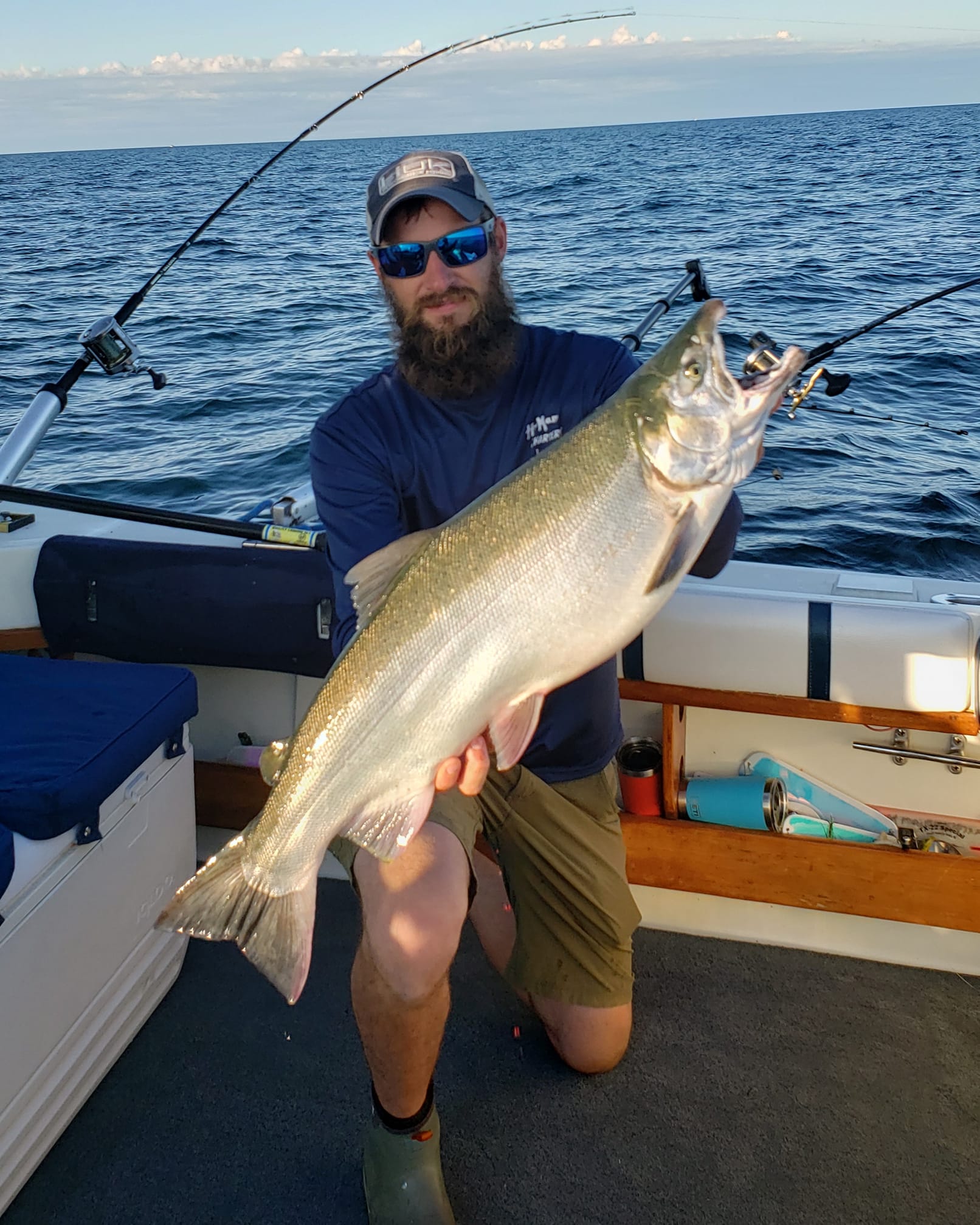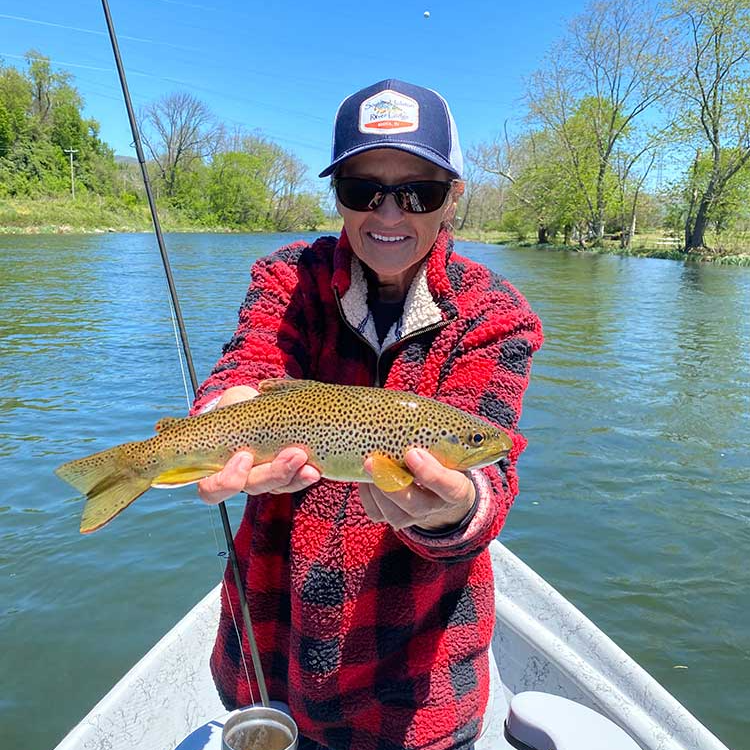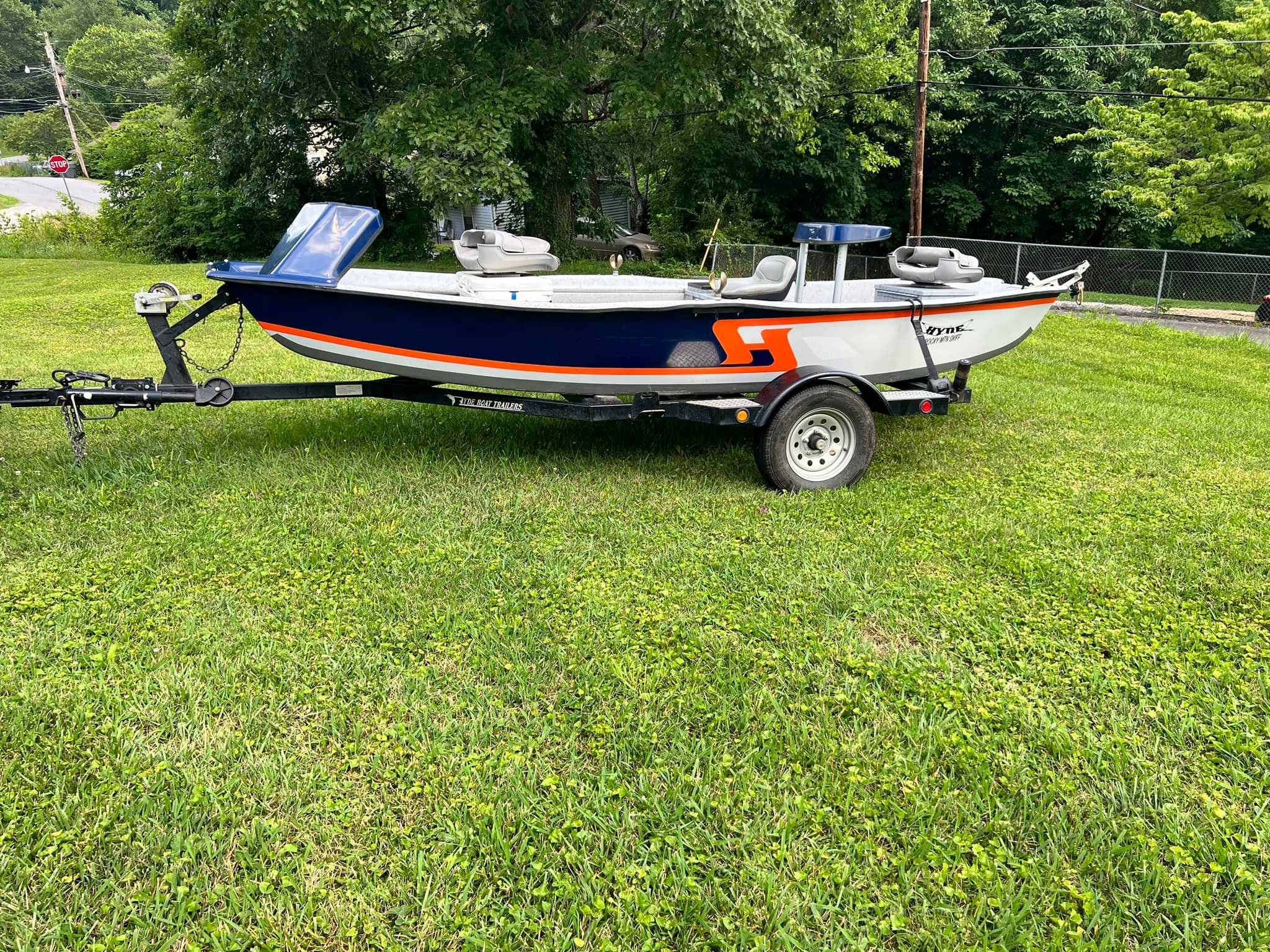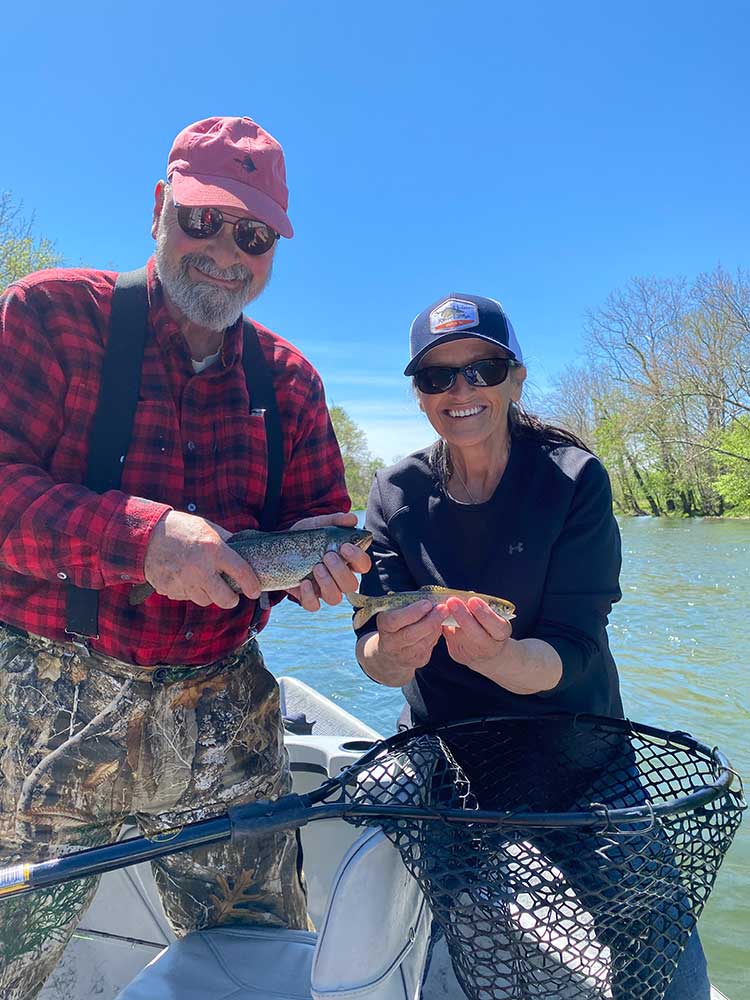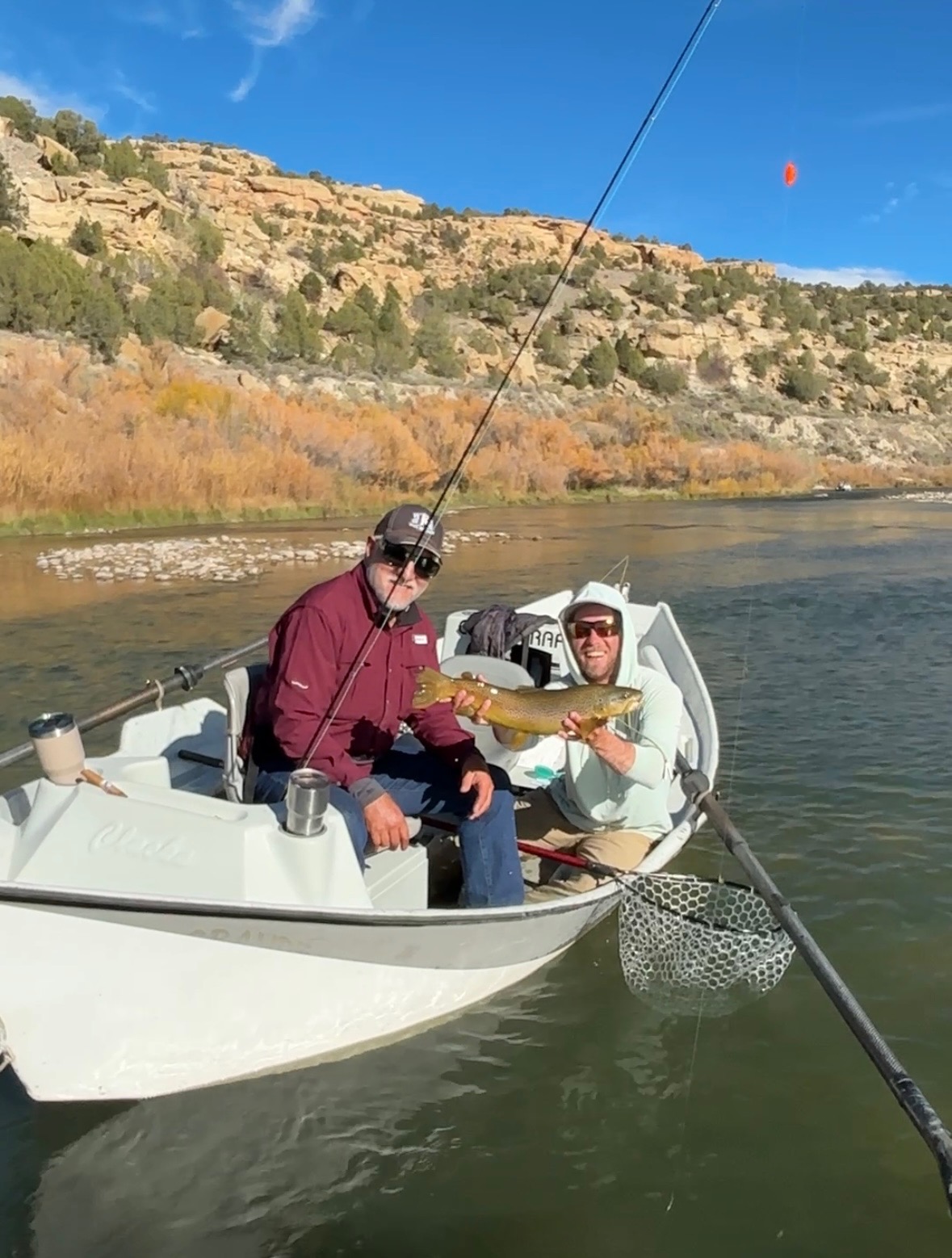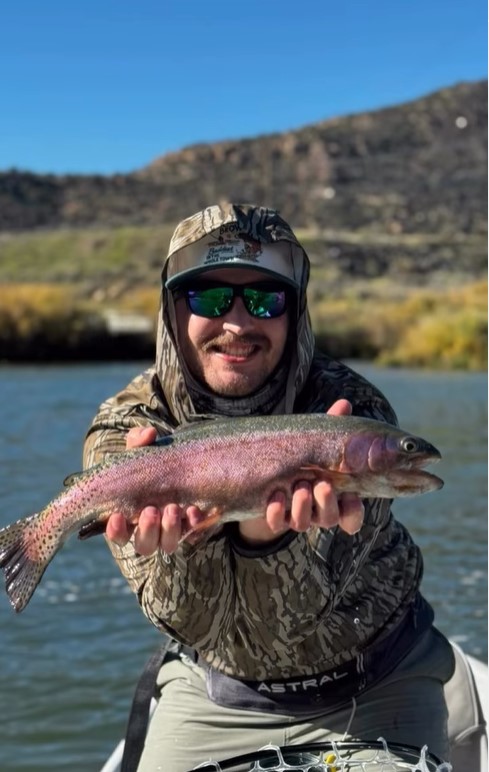Damn Good Guides
Experts Available 24/7
100% Weather Guarantee
Top Cities for Brown Trout Fishing
“Our Damn Good Guides go above and beyond, and we’ve handpicked every single one. We’re passionate about the outdoors and look forward to getting you out on the trip of a lifetime, every time.”
Jonathan and Attison | Co-founders | Austin, Texas
Brown Trout Fishing Guides
Lake Michigan Angler's Delight
Blue Ridge Trout Special
Ozark Fly Fishing Day Trips
Lake Fishing in Winthrop Harbor
Lake Michigan 6 Hour Trip
Full Day Float Trip
River Fishing in Rockbridge Baths
Virginia Full-Day Float Trip
Everything to Know About Booking a fishing trip
What are the best brown trout fishing trips?
The best brown trout fishing trips are:
What is a Brown Trout?
The brown trout (Salmo trutta) is a diverse species of salmonid native to Europe and Asia, that has been introduced globally and flourished in all other continents except Antarctica. Morphs of the species have expanded across multiple ecosystems including rivers, lakes, and oceans, some even migrating between them. Lake trout, for example, are potamodromous, meaning they migrate from lakes to rivers or streams to spawn, whereas sea trout are anadromous, meaning they will migrate from oceans to freshwater.
Due to the multiple morphs and environments inhabited by brown trout, their appearance will vary. Freshwater brown trout will range from coloring that is so silvery and lightly spotted, that they will be mistaken for rainbow trout, to the well-known brassy brown spotted top, that fades into a creamy white belly. There are also regional variants, such as the Loch Leven trout, found in Scotland, which can be identified by their larger fins, slimmer body, and heavy black spotting.
Although they have a large footing worldwide, brown trout are much less plentiful than their cousins, the rainbow trout, though they do tend to live in the same cooler waters. Brown trout are also much tougher to catch than rainbow, making them a worthy prize to even the most skilled anglers. These exceptional game properties were actually the driver to introduce them into so many environments across the world.
How big do Brown Trout get?
Brown trout are a medium-sized fish that vary greatly in size according to their environment. In some rare cases they can grow to over 40 pounds and 20 inches long. However in smaller rivers, they can weigh less than 2.2 pounds. An average brown trout is around 2 to 10 pounds, and between 12 and 14 inches long.
What's the biggest Brown Trout ever caught?
In 2013, the world record brown trout was caught in New Zealand. The International Game Fish Association (IGFA) recognizes Otwin Kandolf as the record holder after he landed a 42-pound, 1-ounce behemoth on a rod and reel.
Previously, the record was held by an Arkansas man, who in May of 1992 caught a 40 pounder out of the Little Red River, a tributary of the White River.
Where is the best place to catch Brown Trout?
Although brown trout can be found worldwide, from the oceans, to the Great Lakes, they are most commonly found in streams and rivers. Some of the best streams to rope your personal record fish are in Colorado, Montana, and Ontario, among other places. They are also strong in numbers in places they have been introduced to such as New Zealand and Argentina.
When should I catch Brown Trout?
Brown trout are a finicky fish who are difficult to catch. Once you’ve found them in one location, you will not see them there again! The best time to target them is early in the morning or right at dusk, when you can fish shadows of overhanging structures.
Brown trout can be caught year round, though the time of year will affect the areas of best fishing. In the summer, be sure to fish the deep holes at the base of rapids to avoid currents. Fall should be spent casting from a bar by a feeder creep where the browns will be migrating for their spawn. Finally, in the winter you’ll need to follow the water flow to where they can be found in oxygen-rich dam trails.
How do you catch Brown Trout?
As early as 1496, anglers have been tested by the challenges of brown trout, who were mentioned in literature at the time as a “right dainty fish.” They can be caught on light spinning tackle, with spoons, spinners, plugs, and jerkbaits when using careful casting. These lures should be the color of the local forage, what the browns will typically be feeding on. This can include common insects, frogs, and mice, as well as patterns of baby trout that the fish will predate. Live bait is also a possibility, with nightcrawlers being the best option.
Fly fishing is the most popular choice of anglers targeting brown trout. There are two recommended tactics for big browns on the fly. One would be to sight fish from the bank using small nymphs. The other is to cast large articulated flies, like streamers.
In rivers, brown trout will hide out near structures or holes where they have easy access to prey going by. Lakes and oceans can be a bit trickier as they will spread out to feed, but the time of year and local knowledge will give you some clues where to start.
Are Brown Trout good to eat? What are the best Brown Trout recipes?
Browns are typically caught and released, but if kept they are delicious to eat. They are the only truly wild freshwater fish available to most consumers, as most salmon are farmed, and farmed trout are typically rainbows. This makes them quite a delicacy, free range, and organic. As carnivores, they have a meaty flesh rich in Omega-3 fatty acids, with a strong fishy flavor.
Typically the smaller the fish, less than two pounds, are the best for eating. It is recommended to soak the filets in milk overnight to pull some of the oil and overly-fishy taste from the flesh. They can then be cooked in a multitude of ways. The most traditional is to grill them over a fire, flayed, after lightly seasoning them with salt, pepper, and lemon juice.
Recent Reviews
Cities
- Albuquerque, NM
- Batesville, AR
- Belberaud, France
- Berrien Springs, MI
- Bishop, CA
- Blacksburg, VA
- Blue Ridge, GA
- Boone, NC
- Bozeman, MT
- Branson, MO
- Brethren, MI
- Bristol, TN
- Broken Bow, OK
- Buffalo Valley, TN
- Cherokee, NC
- Chicago, IL
- Clarkesville, GA
- Cody, WY
- Cotter, AR
- Croton, MI
- Crow Agency, MT
- Duluth, MN
- Ellsworth, ME
- Emigrant, MT
- Ennis, MT
- Eureka Springs, AR
- Flippin, AR
- Fort Smith, MT
- Gallatin Gateway, MT
- Geneva, OH
- Grand Haven, MI
- Heber Springs, AR
- Helena, MT
- Highlands, NC
- Holland, MI
- Hume, CA
- Indiana, PA
- Jackson, WY
- Johnson City, TN
- Kenosha, WI
- Ketchum, ID
- Knoxville, TN
- Leicester, NC
- Lewiston, NY
- Lewiston, CA
- Livingston, MT
- Ludington, MI
- Manistee, MI
- Mastic, NY
- Milwaukee, WI
- Missoula, MT
- Mountain Home, AR
- Muskegon, MI
- Navajo Dam, NM
- New Braunfels, TX
- New Buffalo, MI
- Newaygo, MI
- Norfork, AR
- Oswego, NY
- Provo, UT
- Pulaski, NY
- Raton, NM
- Rockbridge Baths, VA
- Roswell, GA
- Saint Xavier, MT
- Salem, SC
- Sargents, CO
- Senegüé, Spain
- Sheboygan, WI
- Sheridan, MT
- Silver Star, MT
- South Boardman, MI
- South Haven, MI
- St. Joseph, MI
- Stanwood, MI
- Steamboat Springs, CO
- Strasburg, VA
- Table Rock, MO
- Twin Bridges, MT
- Watauga, TN
- Waukegan, IL
- Welland, Canada
- Whitehall, MI
- Winthrop Harbor, IL
- Yellowstone National Park, WY
Other Fishing Species
- Atlantic Mackerel
- Atlantic Salmon
- Black Seabass
- Bluefish
- Bonito
- Bowfin
- Brook Trout
- Carp
- Channel Catfish
- Chinook Salmon
- Coho Salmon
- Crappie
- Cutthroat Trout
- False Albacore
- Flounder
- Fluke
- Freshwater Drum
- Golden Trout
- Hybrid Striped Bass
- Lake Trout
- Lake Whitefish
- Largemouth Bass
- Muskie
- Northern Pike
- Perch
- Pink Salmon
- Rainbow Trout
- Rio Grande Cutthroat Trout
- Scup
- Smallmouth Bass
- Spiny Dogfish
- Spotted Bass
- Steelhead
- Striped Bass
- Tautog
- Triggerfish
- Walleye
- Weakfish
Featured Cities
- Fishing Charters Near Me
- Austin Fishing Guides
- Biloxi Fishing Charters
- Bradenton Fishing Charters
- Cabo San Lucas Fishing Charters
- Cancun Fishing Charters
- Cape Coral Fishing Charters
- Charleston Fishing Charters
- Clearwater Fishing Charters
- Corpus Christi Fishing Charters
- Crystal River Fishing Charters
- Dauphin Island Fishing Charters
- Daytona Beach Fishing Charters
- Destin Fishing Charters
- Fort Lauderdale Fishing Charters
- Fort Myers Fishing Charters
- Fort Walton Beach Fishing Charters
- Galveston Fishing Charters
- Gulf Shores Fishing Charters
- Hatteras Fishing Charters
- Hilton Head Fishing Charters
- Islamorada Fishing Charters
- Jacksonville Fishing Charters
- Jupiter Fishing Charters
- Key Largo Fishing Charters
- Key West Fishing Charters
- Kona Fishing Charters
- Lakeside Marblehead Fishing Charters
- Marathon Fishing Charters
- Marco Island Fishing Charters
- Miami Fishing Charters
- Montauk Fishing Charters
- Morehead City Fishing Charters
- Naples Fishing Charters
- New Orleans Fishing Charters
- New Smyrna Beach Fishing Charters
- Ocean City Fishing Charters
- Orange Beach Fishing Charters
- Panama City Beach Fishing Charters
- Pensacola Fishing Charters
- Pompano Beach Fishing Charters
- Port Aransas Fishing Charters
- Port Orange Fishing Charters
- Rockport Fishing Charters
- San Diego Fishing Charters
- San Juan Fishing Charters
- Sarasota Fishing Charters
- South Padre Island Fishing Charters
- St. Augustine Fishing Charters
- St. Petersburg Fishing Charters
- Tampa Fishing Charters
- Tarpon Springs Fishing Charters
- Venice Fishing Charters
- Virginia Beach Fishing Charters
- West Palm Beach Fishing Charters
- Wilmington Fishing Charters
- Wrightsville Beach Fishing Charters
What's biting?
View Brown Trout Fishing Reports from our damn good guides.
Didn't Find What You Were Looking For?
Our guides are Damn Good Guides, which means they’re vetted by our team of outdoor experts who know them on a first-name basis. We hand pick each and every one of them, and our network spans all across the US and beyond.
The proof is in the pudding, and we’re incredibly proud of our 4.9 / 5 average review score. Hit the button below to see more trip options:

